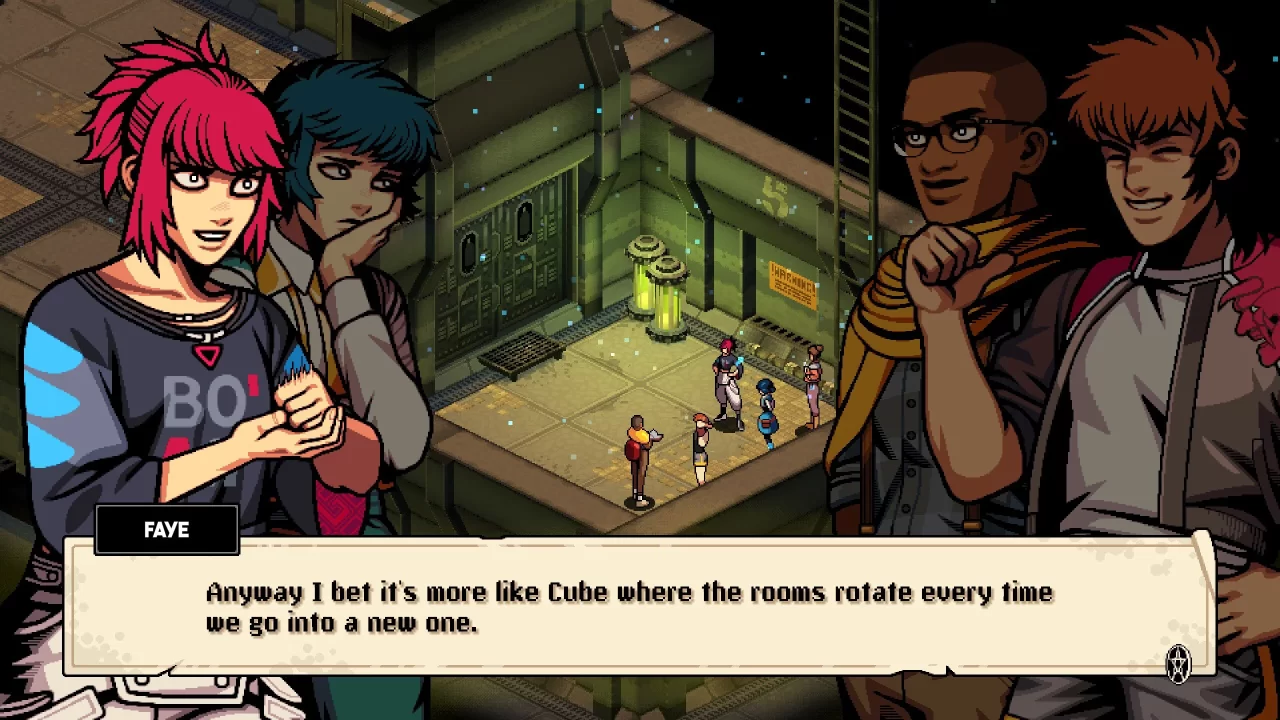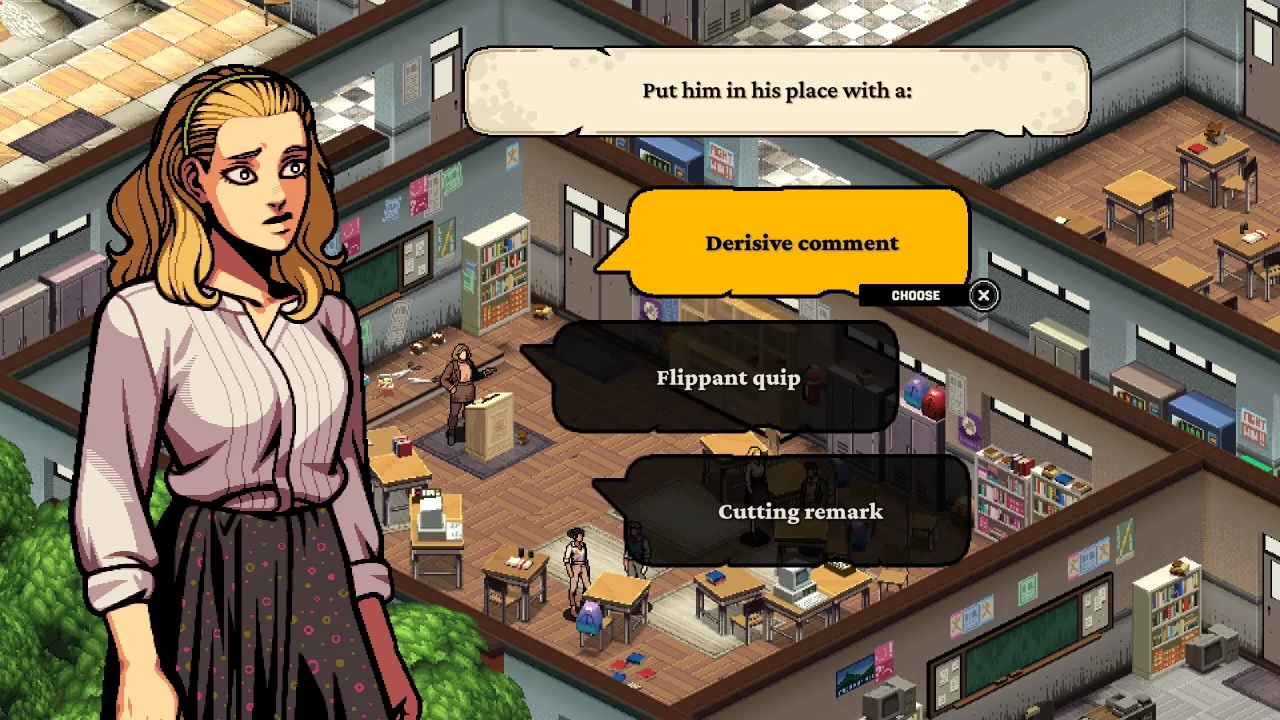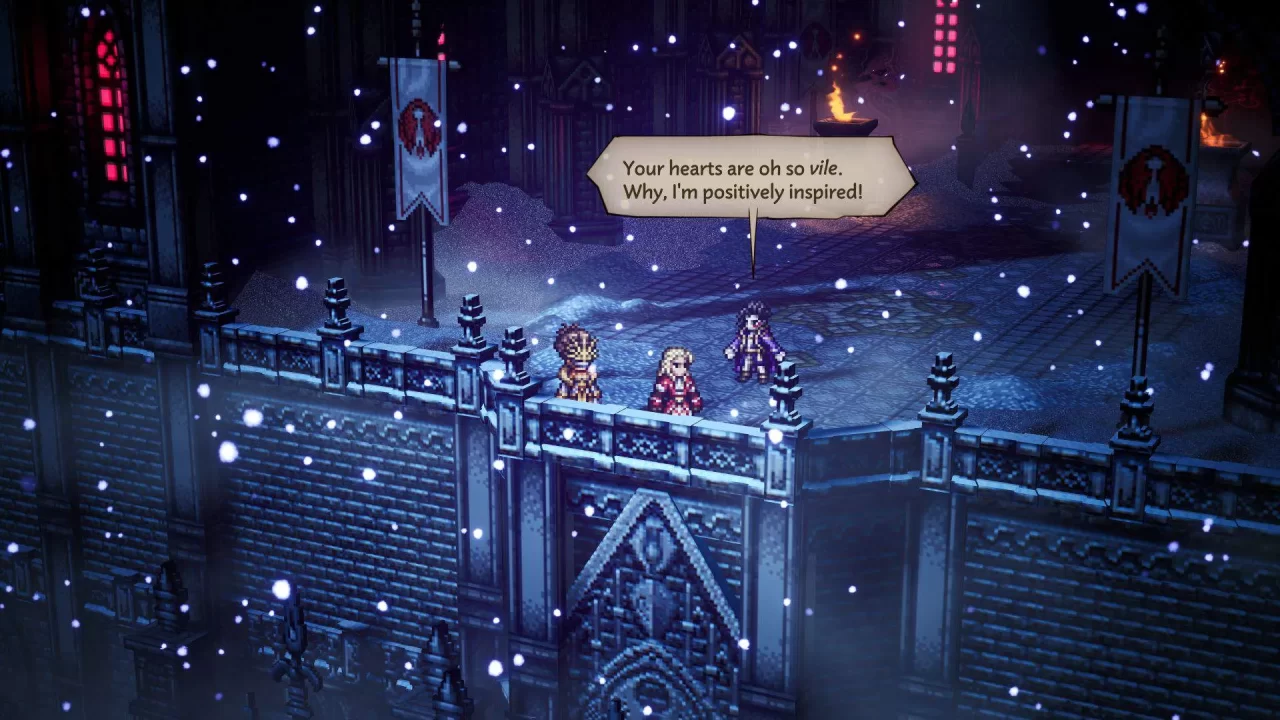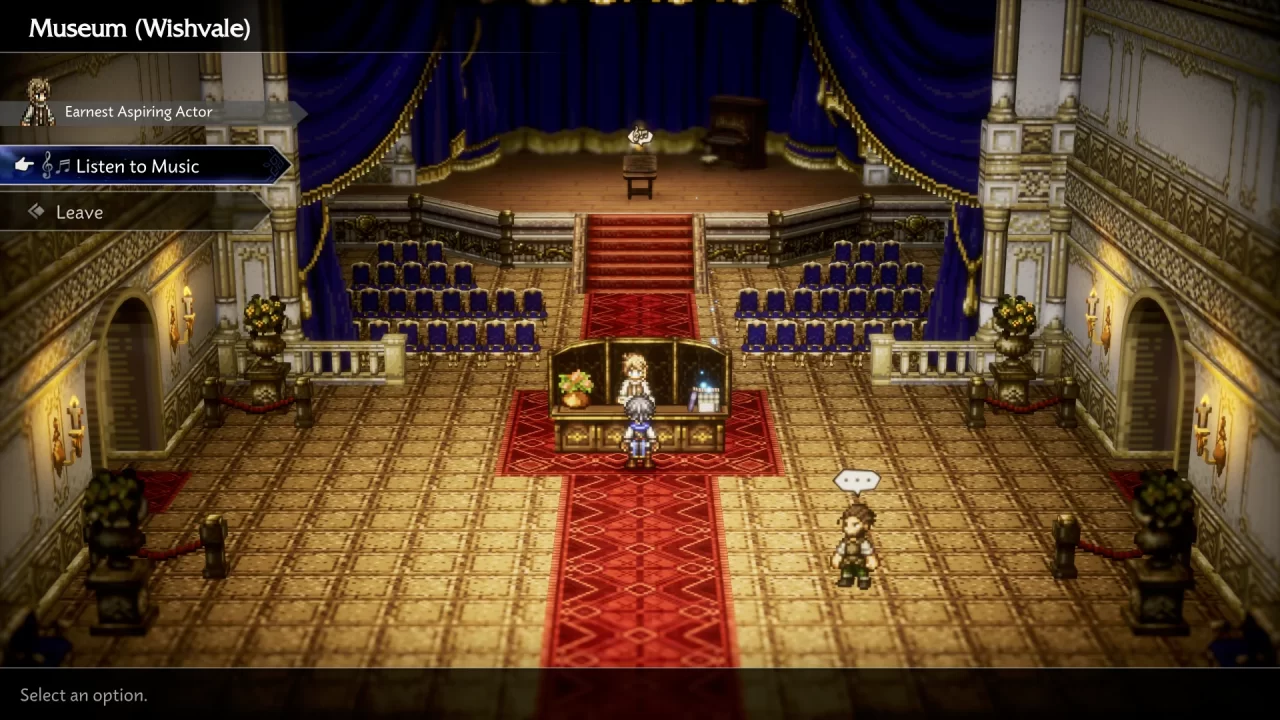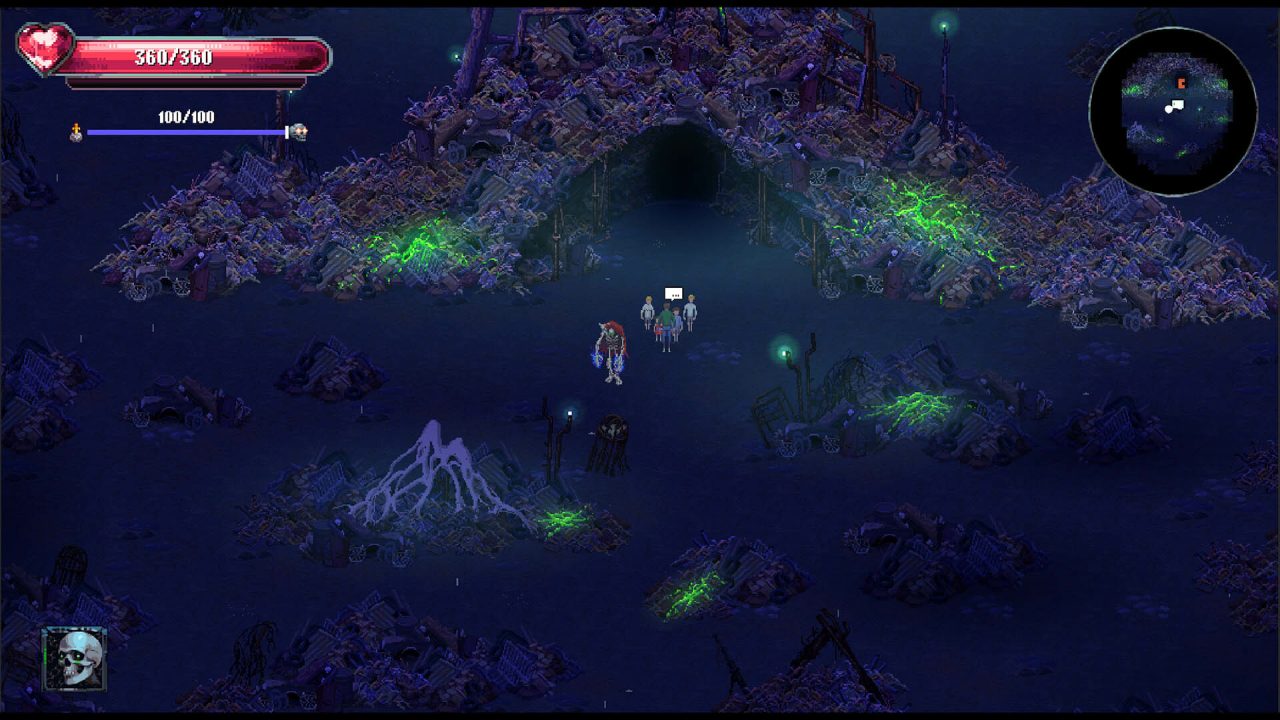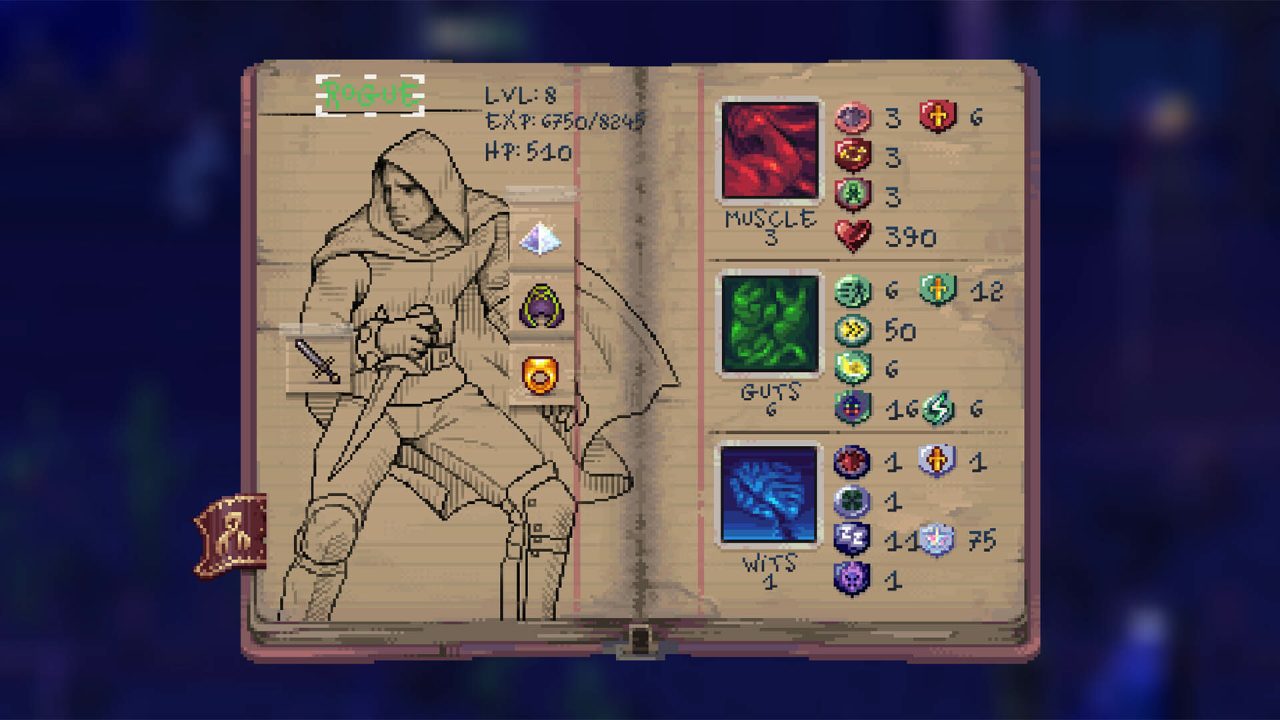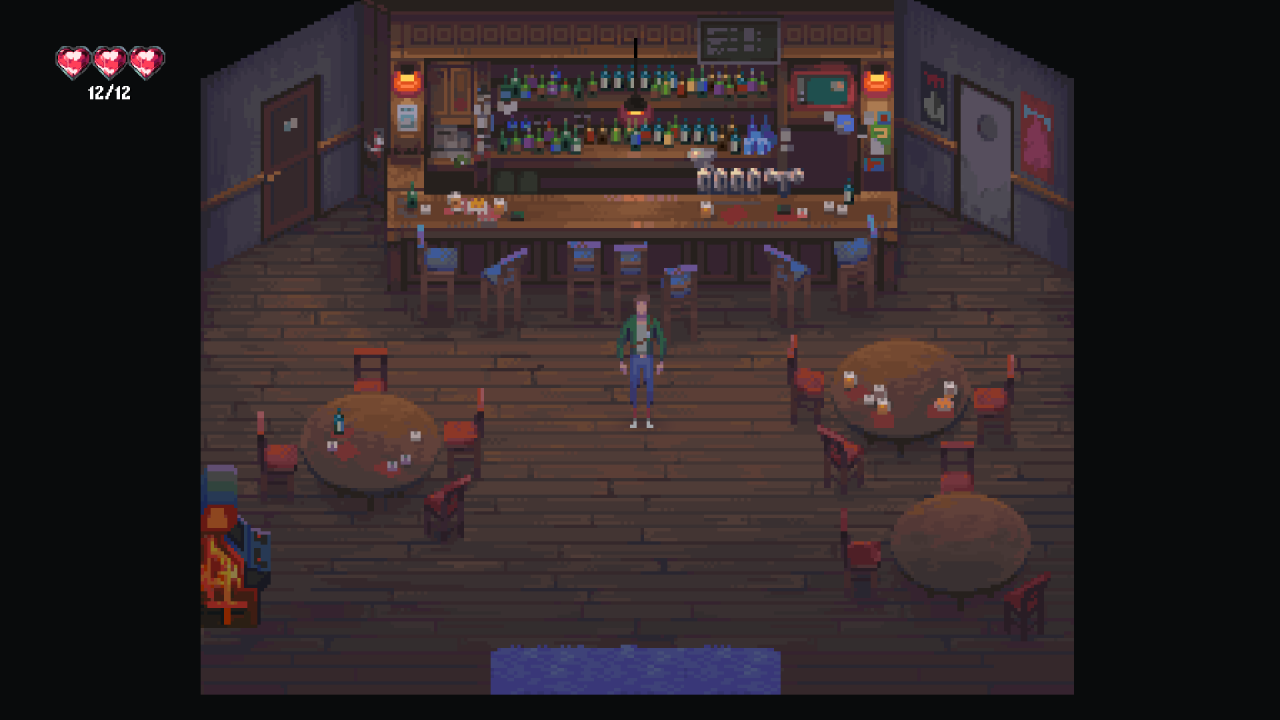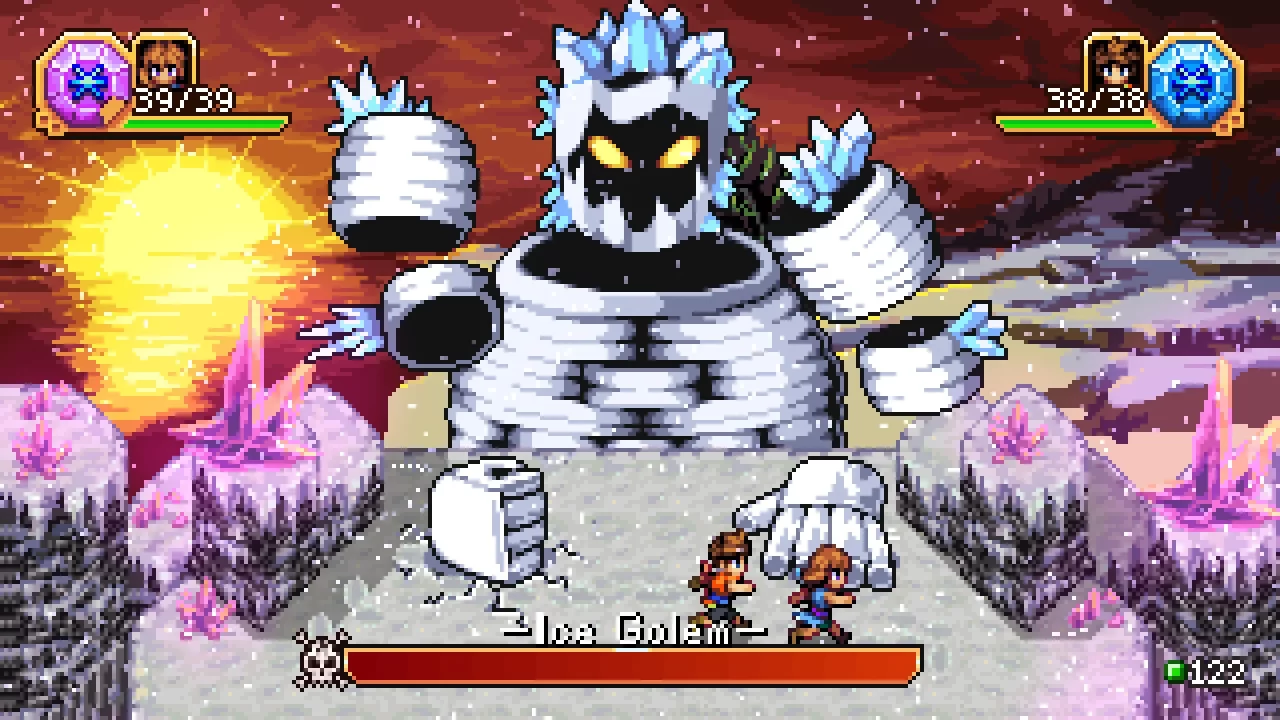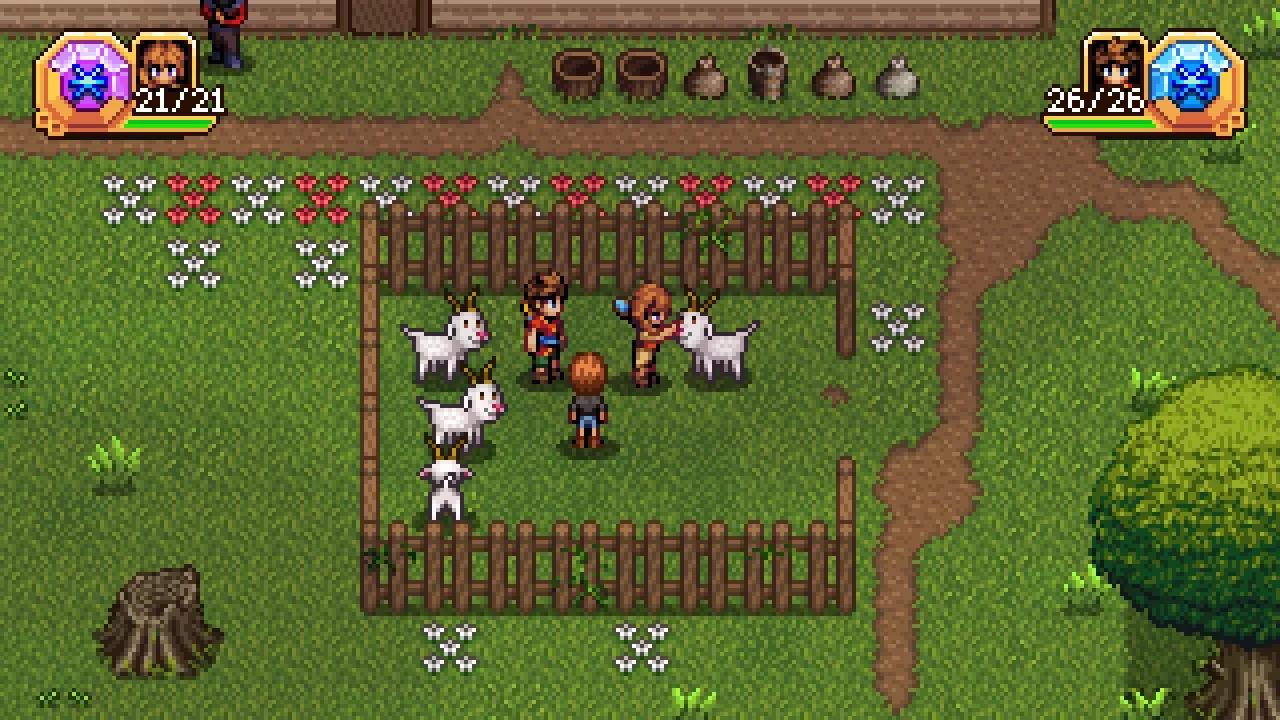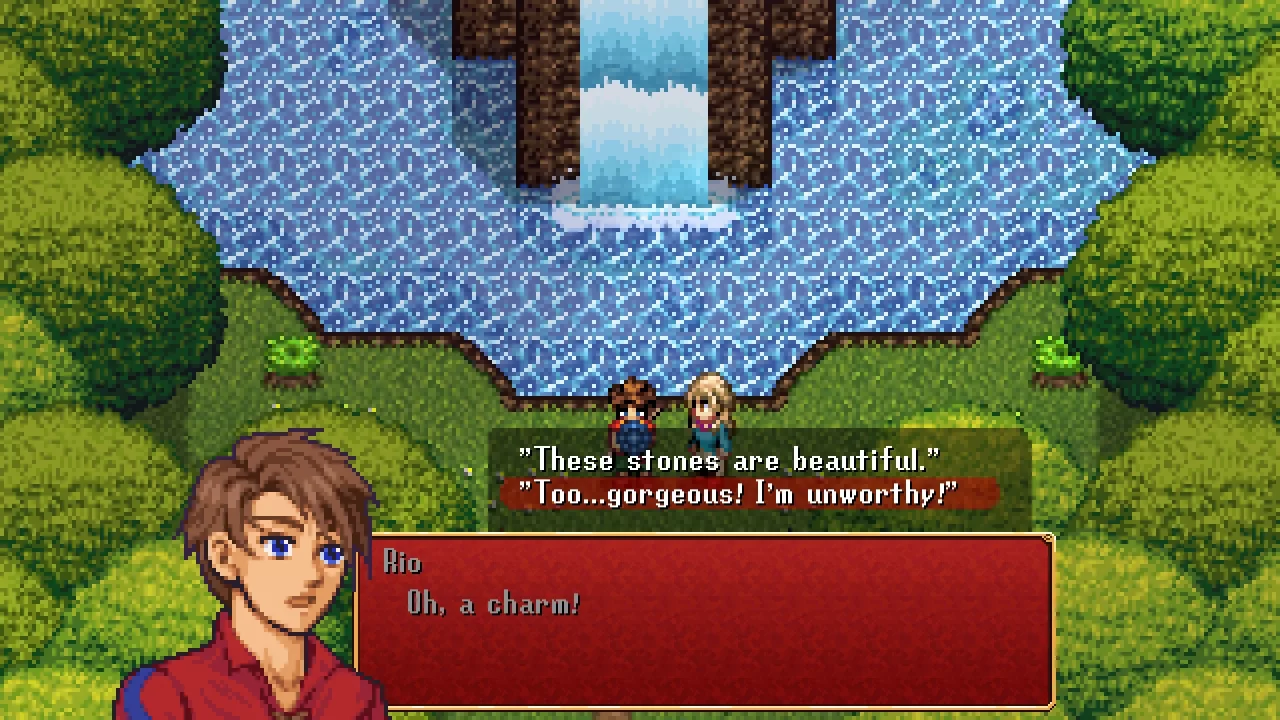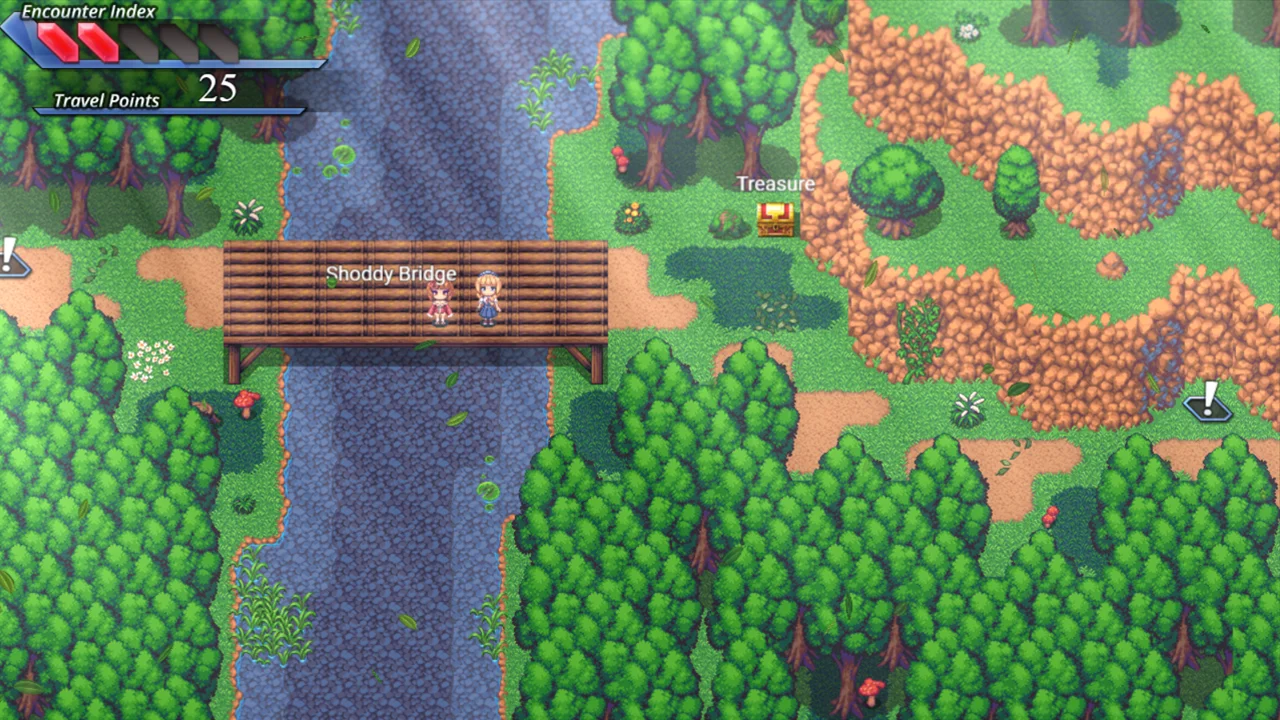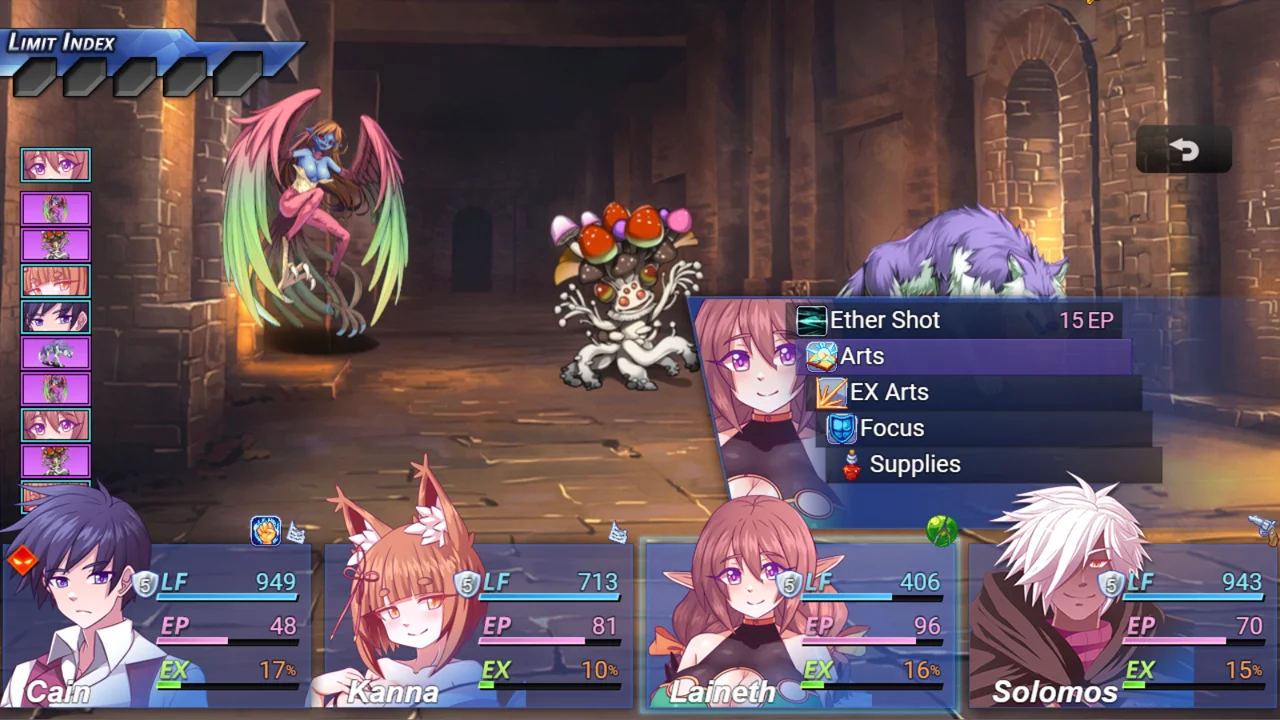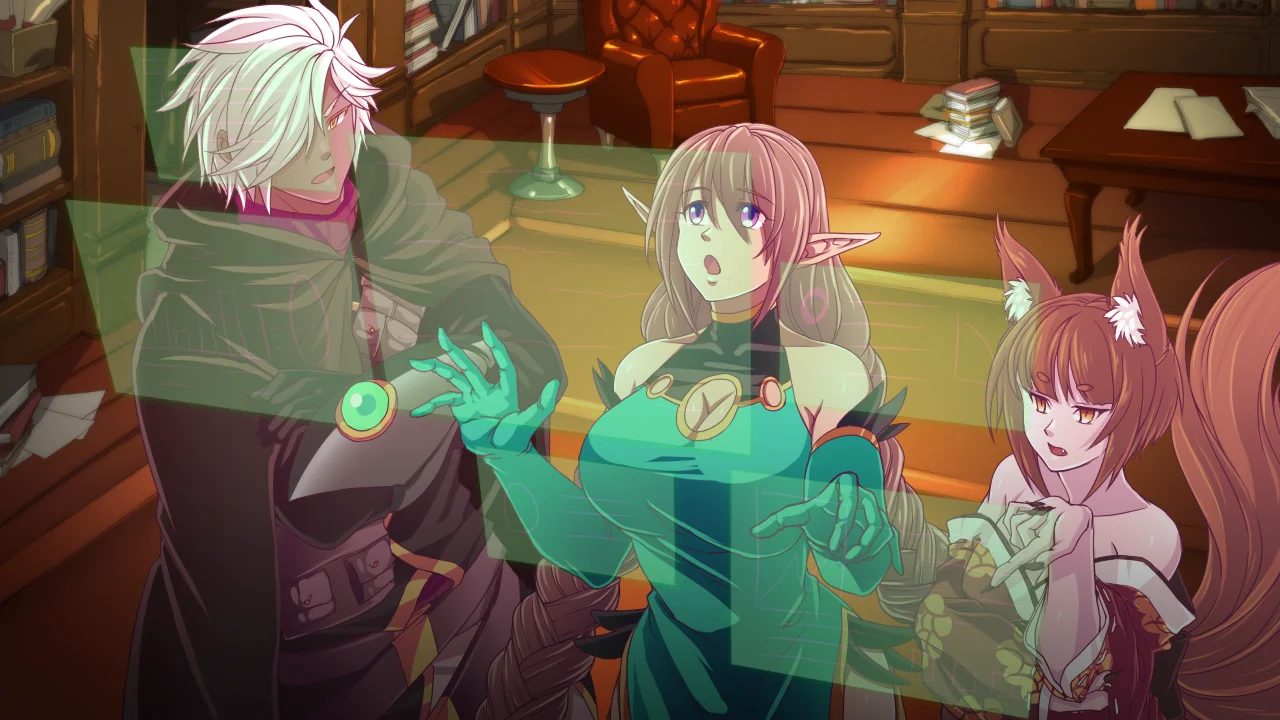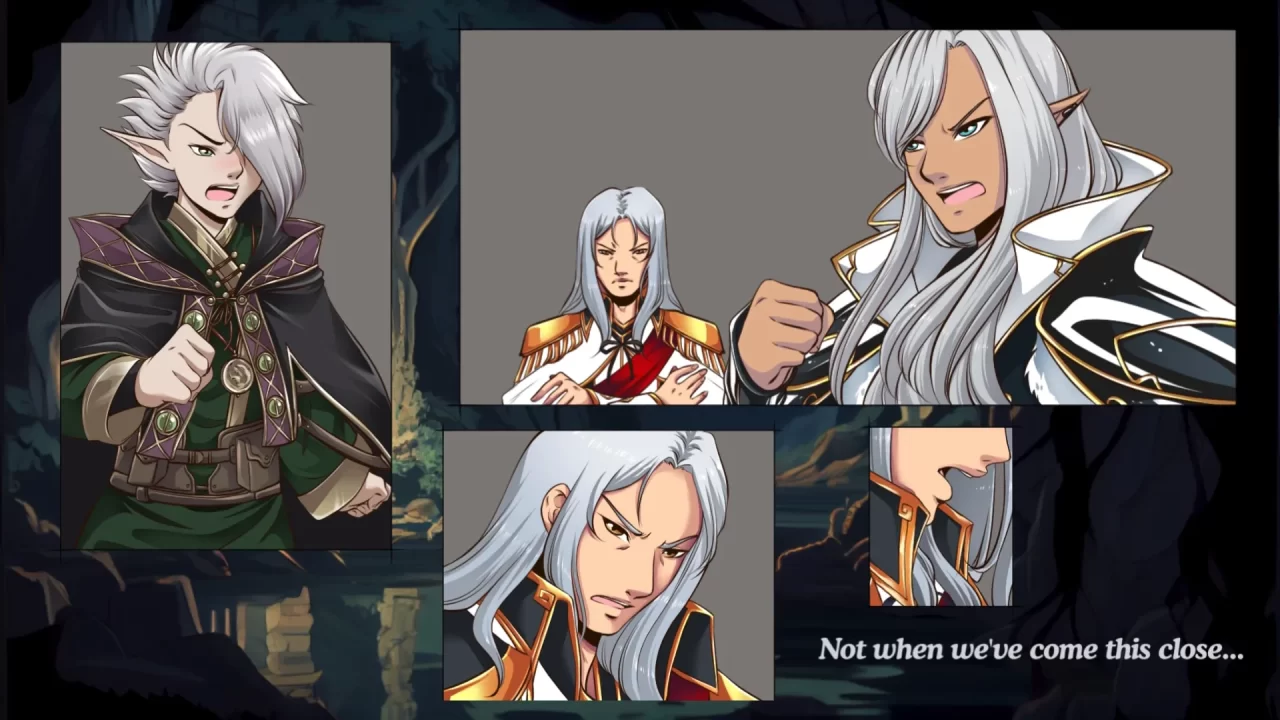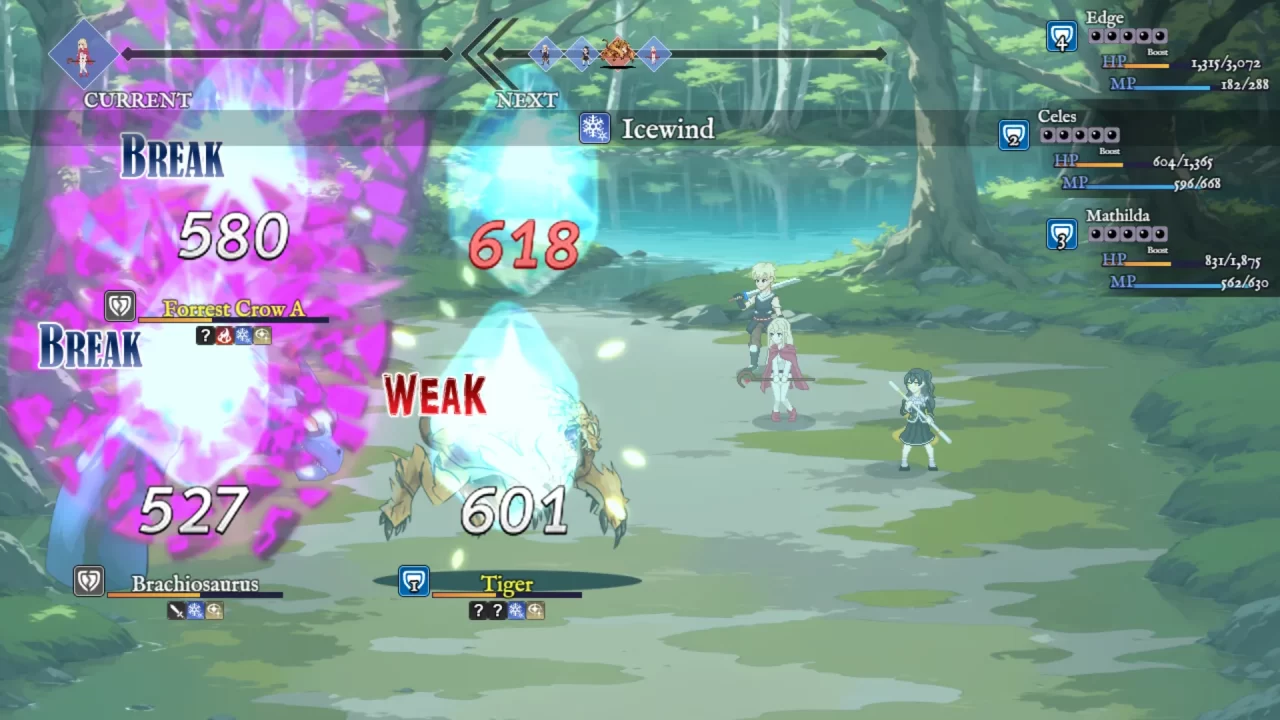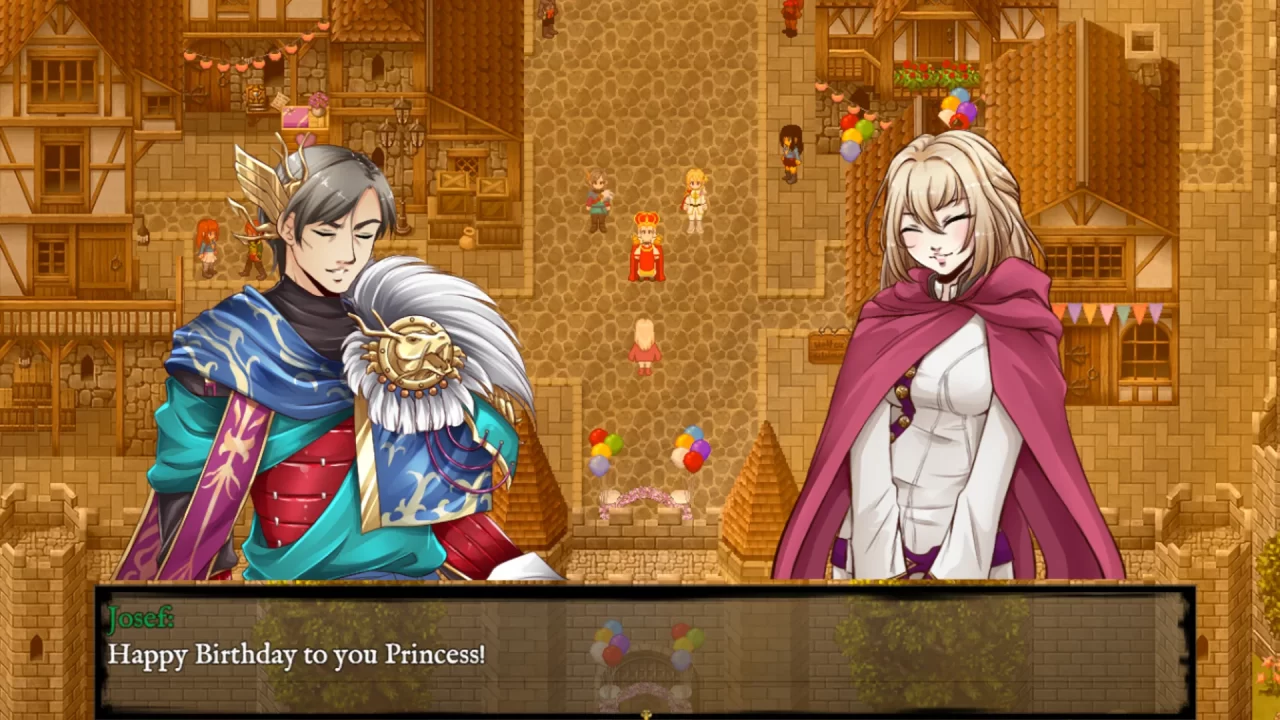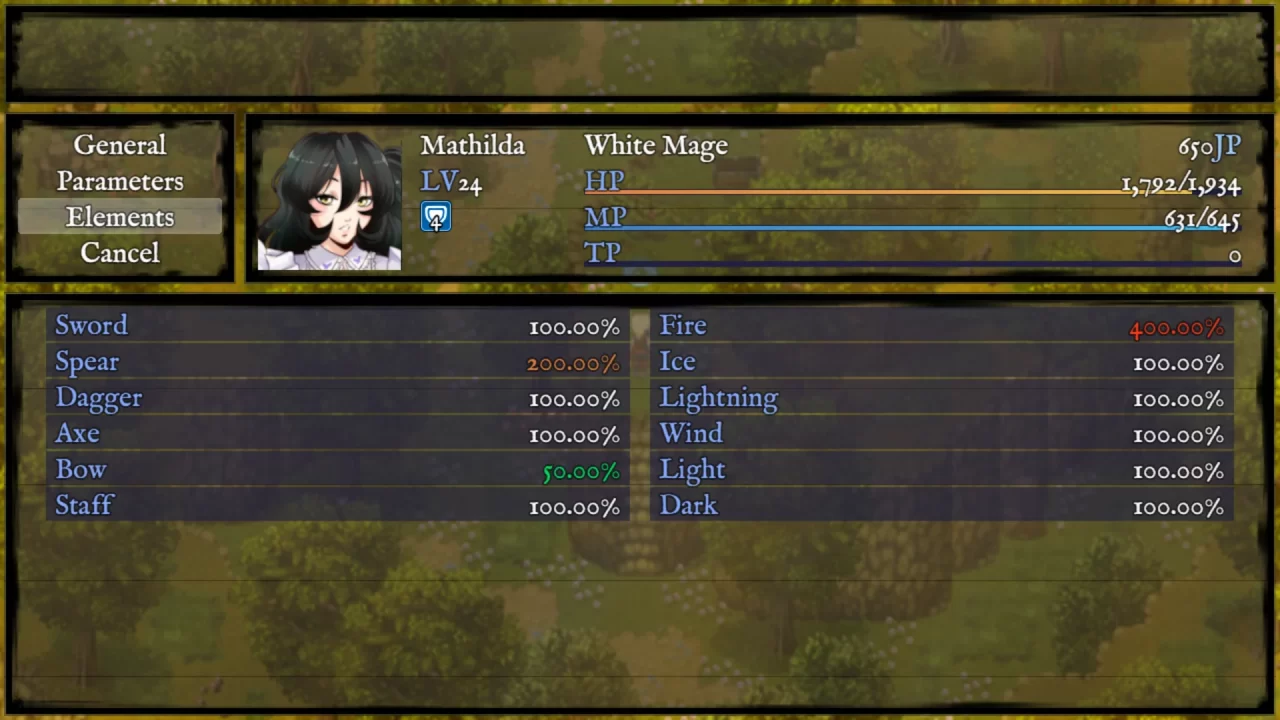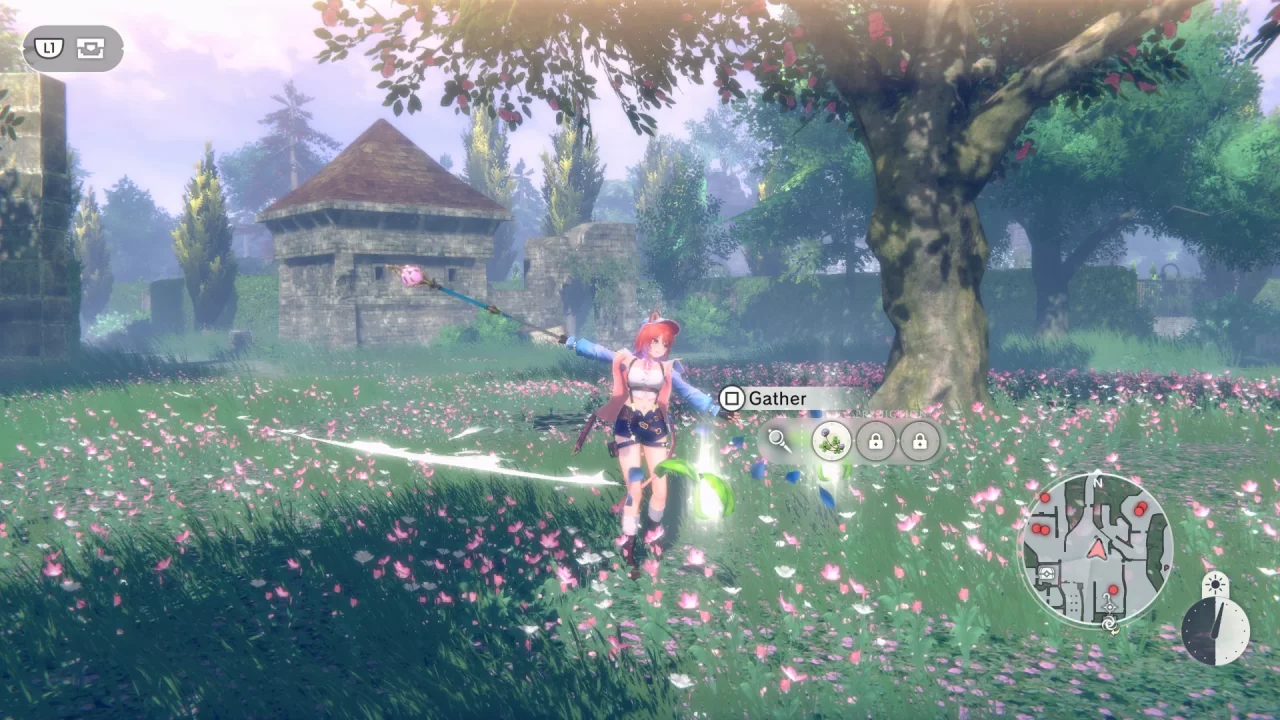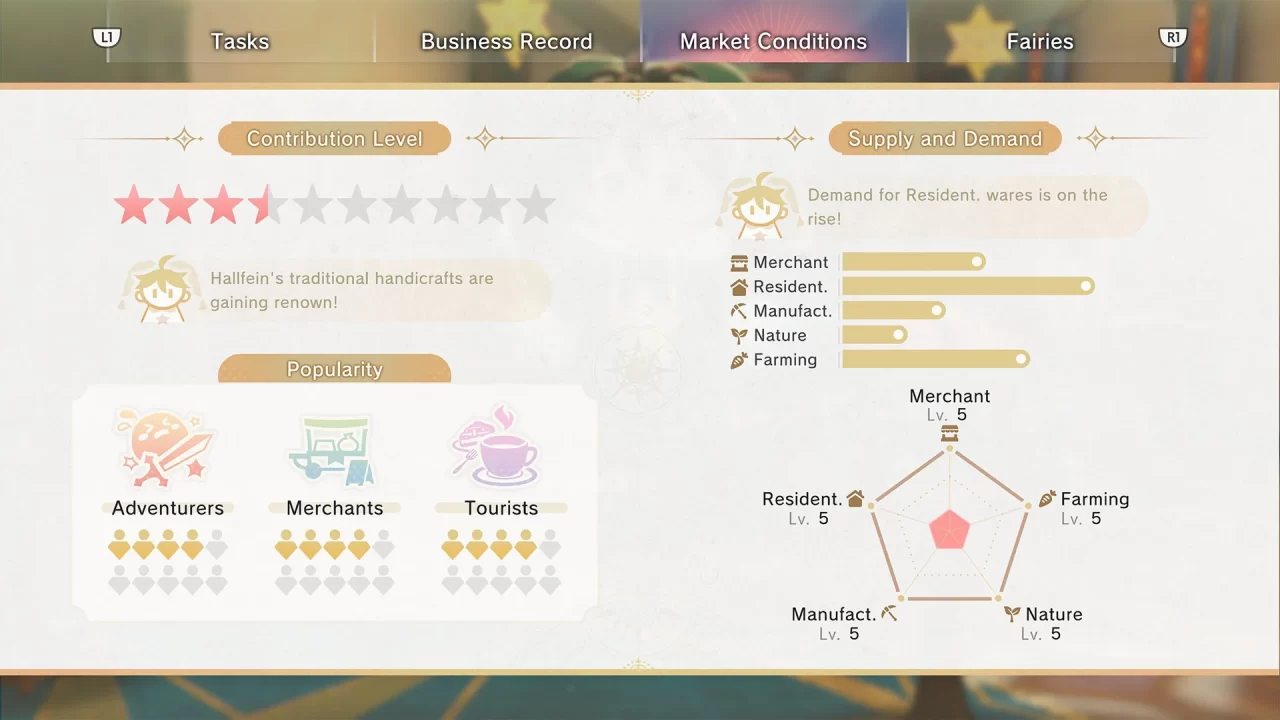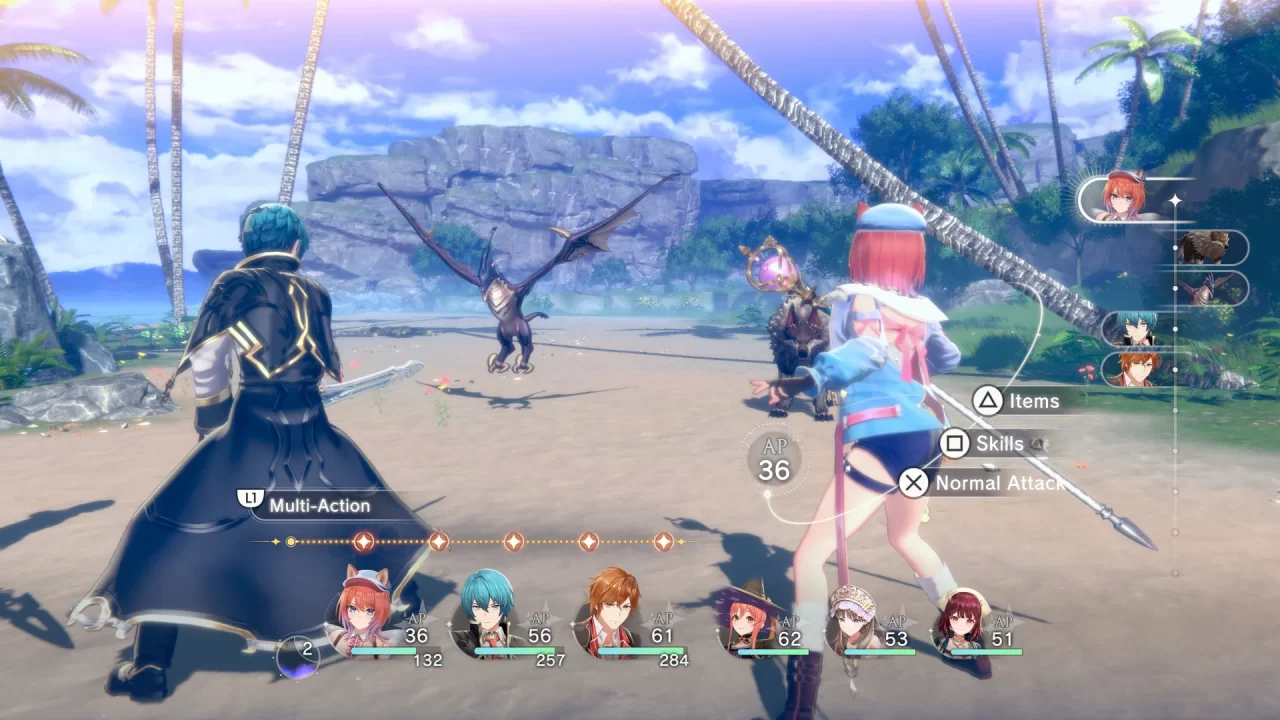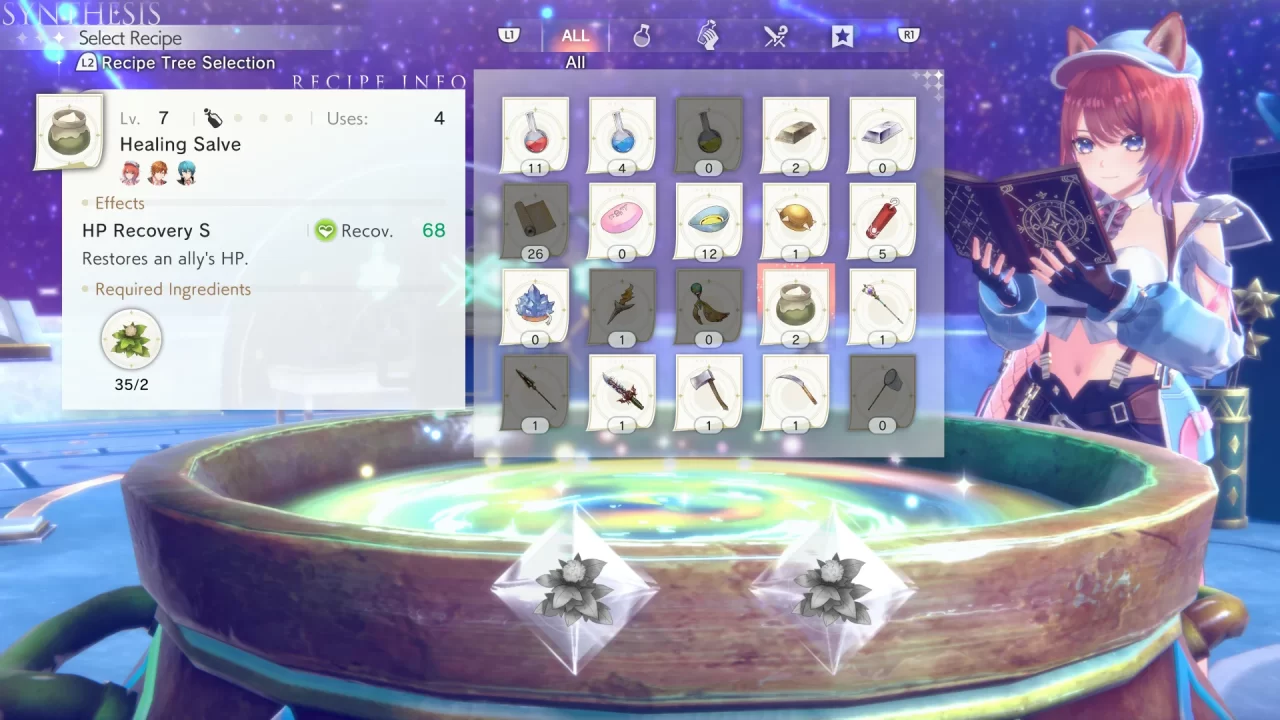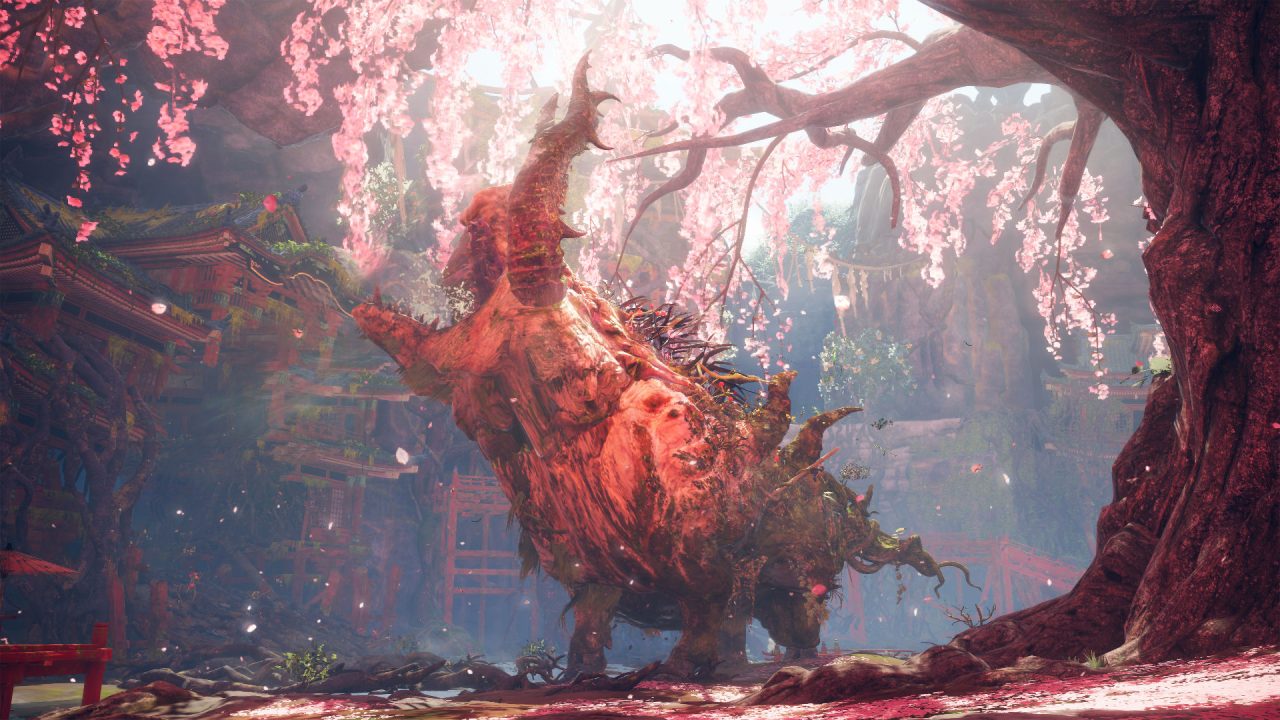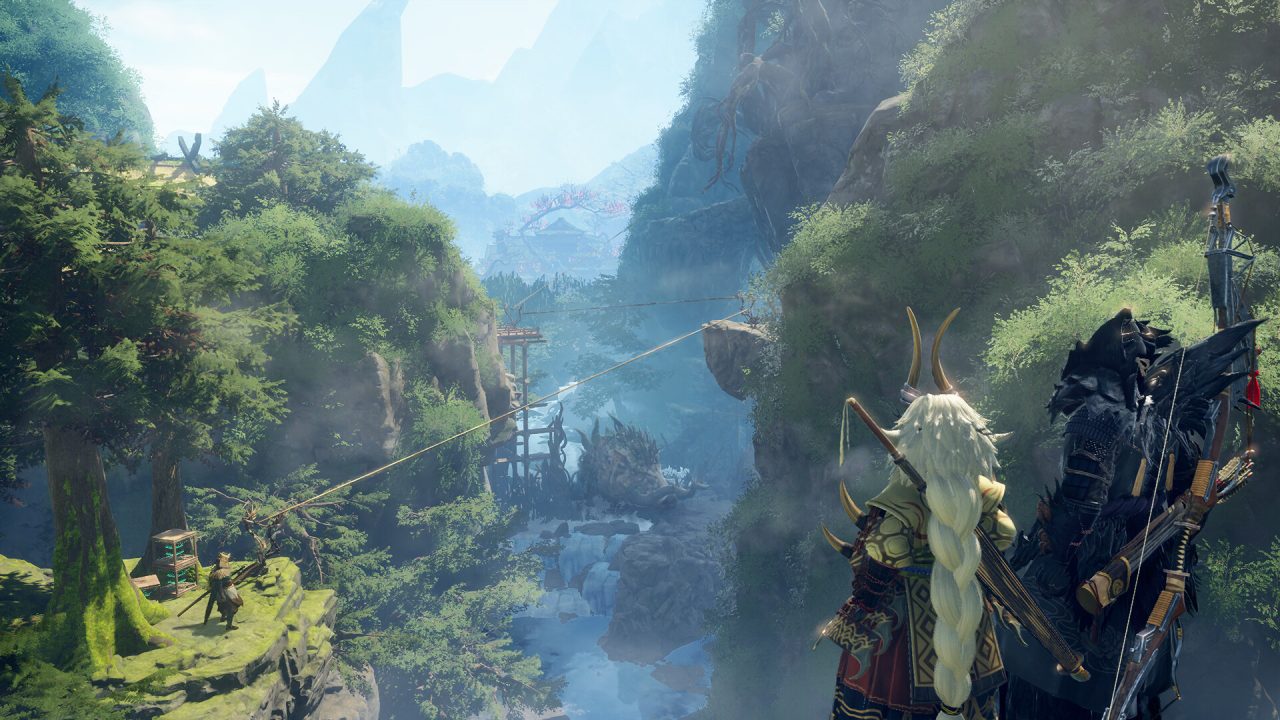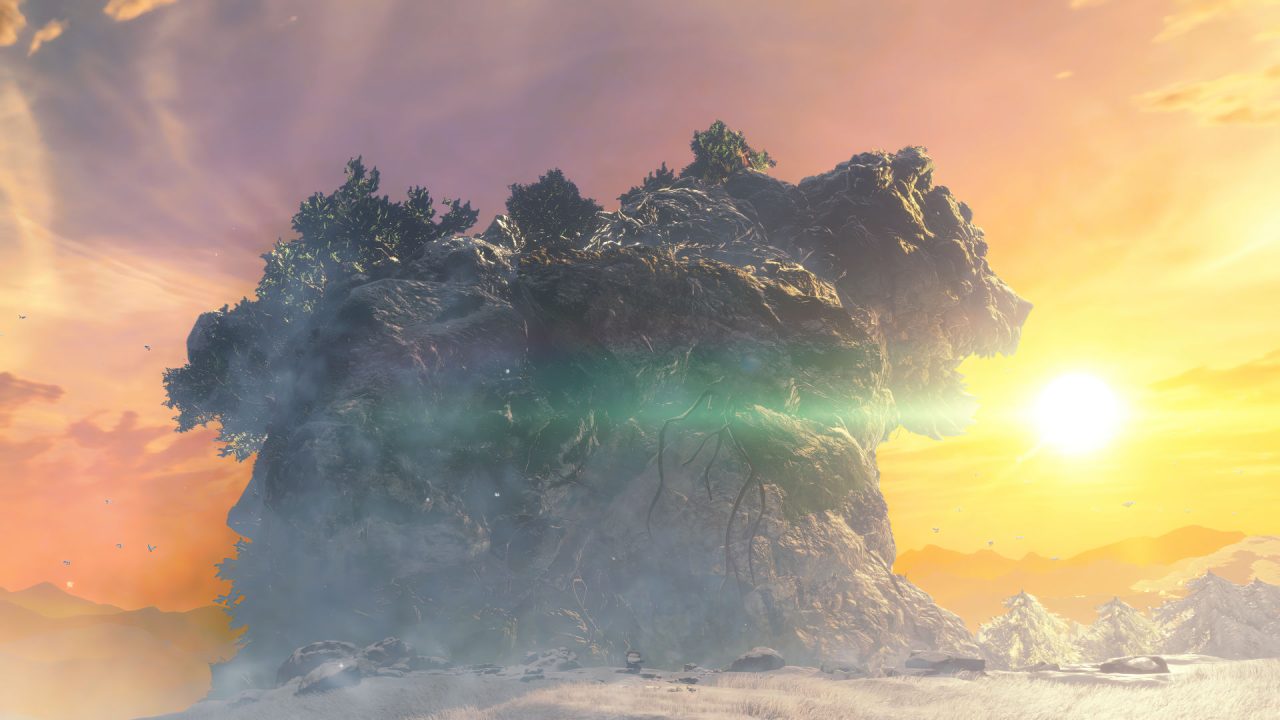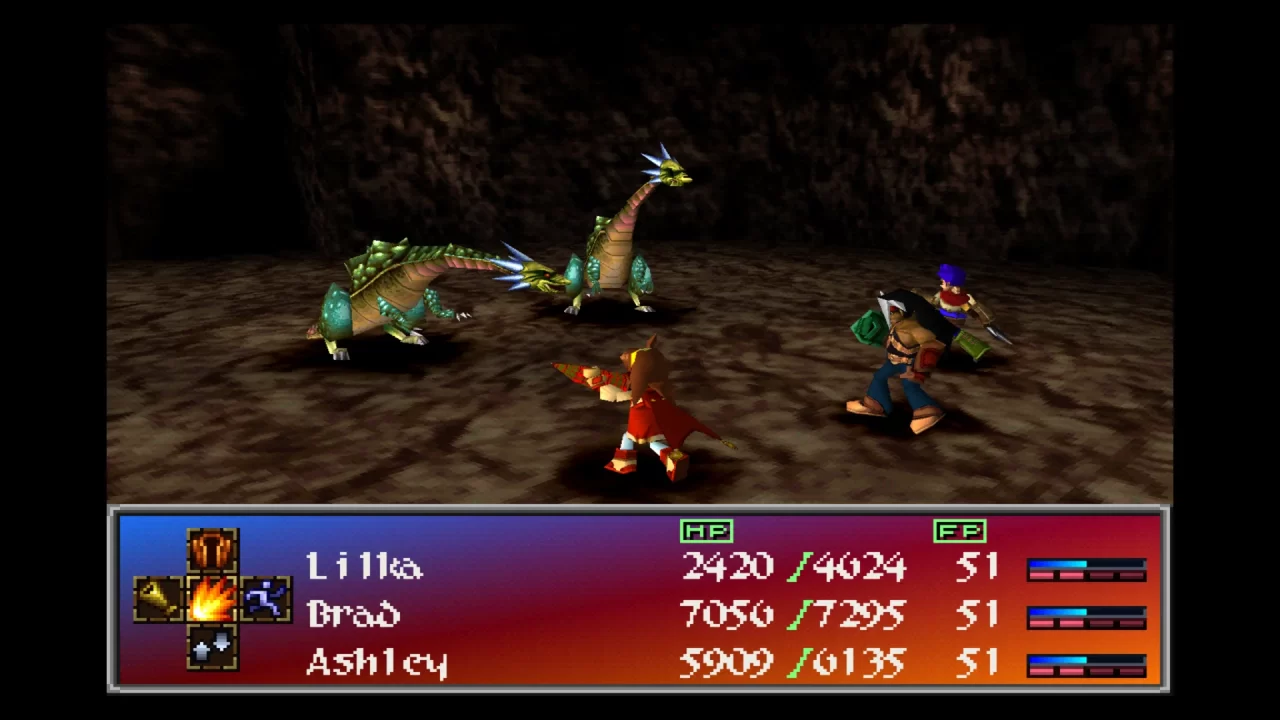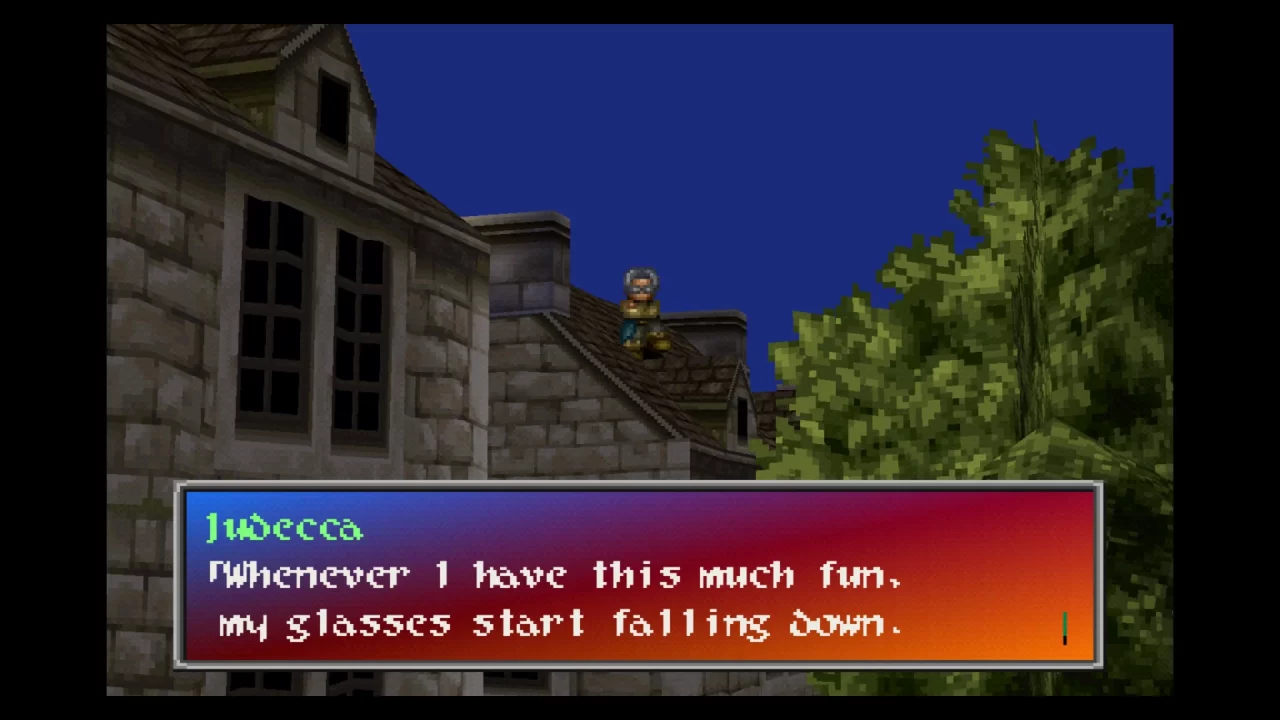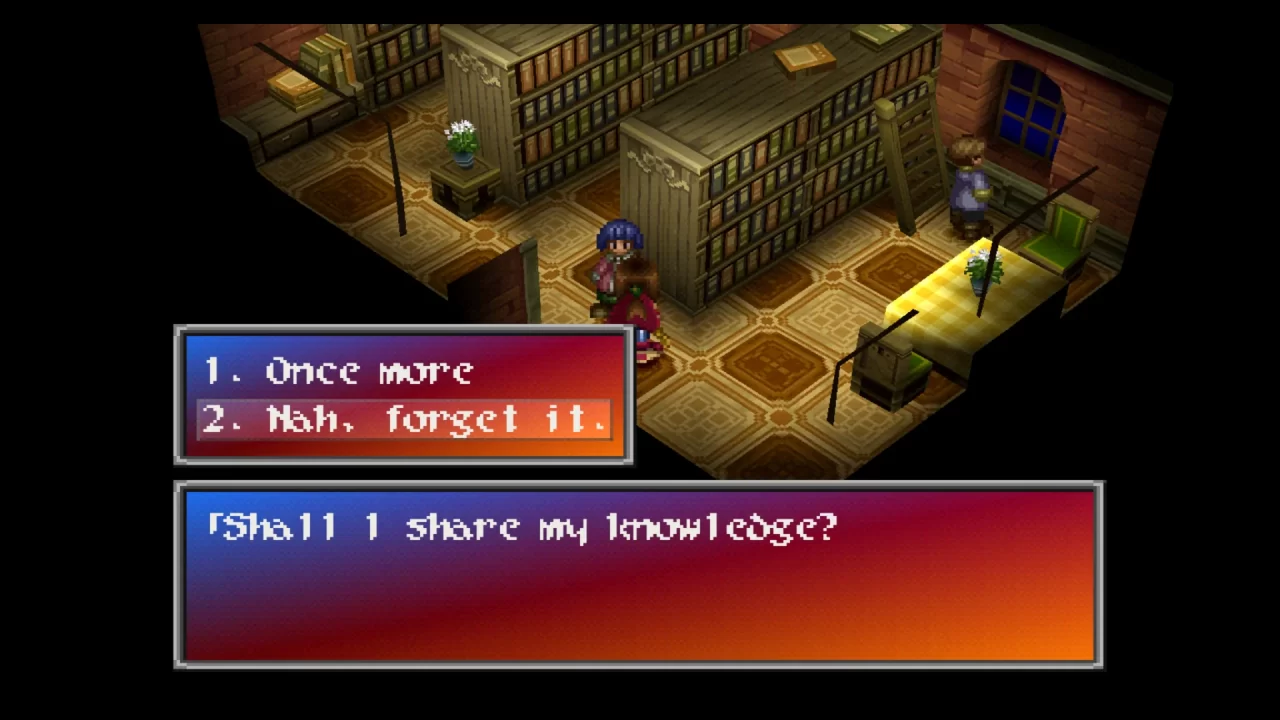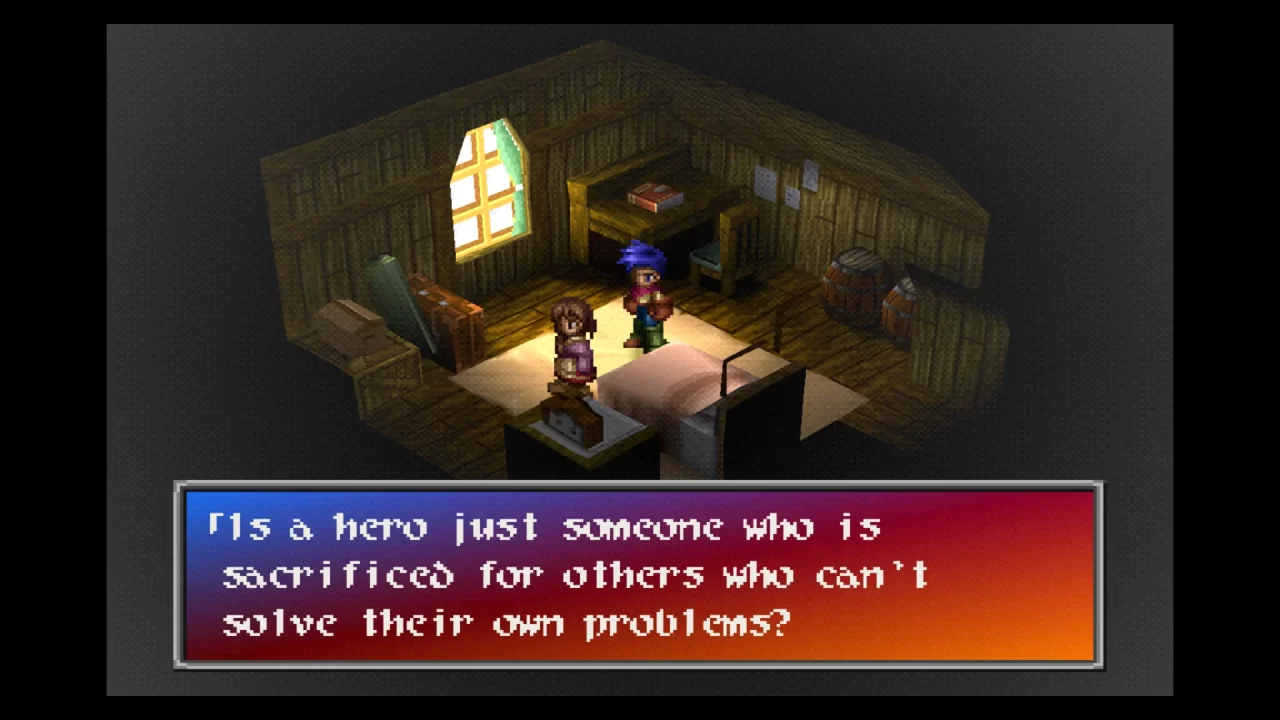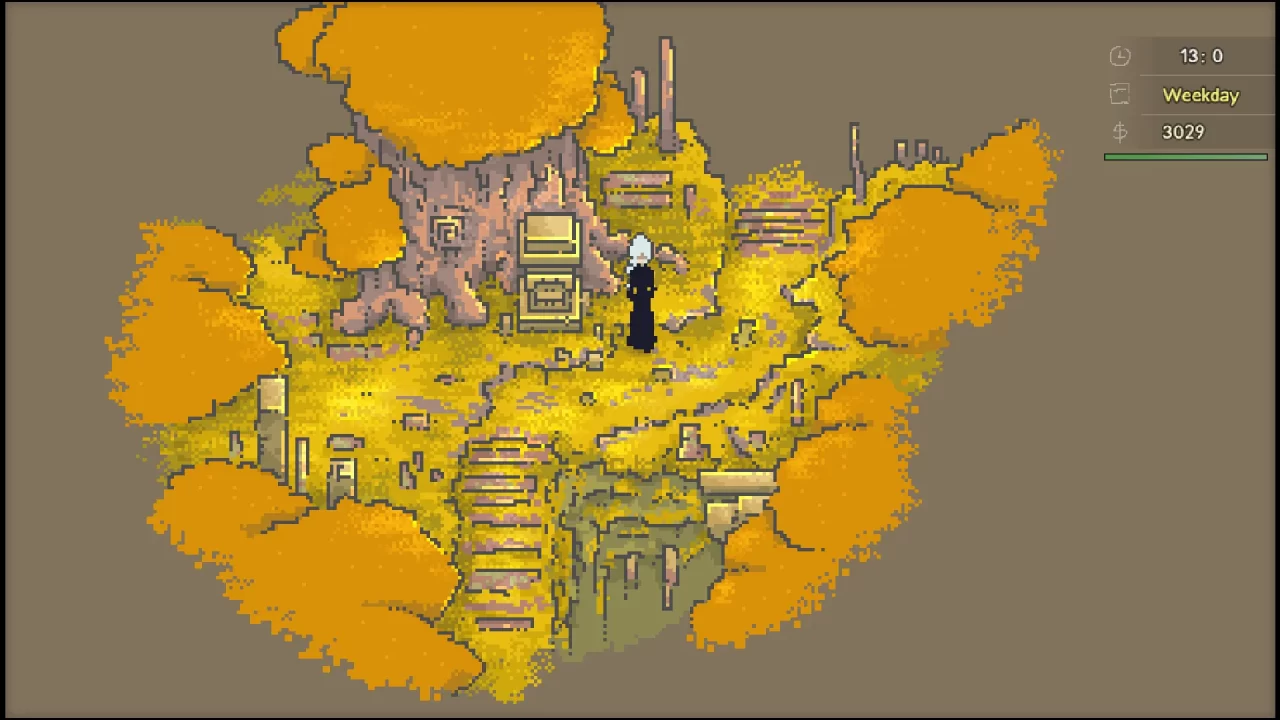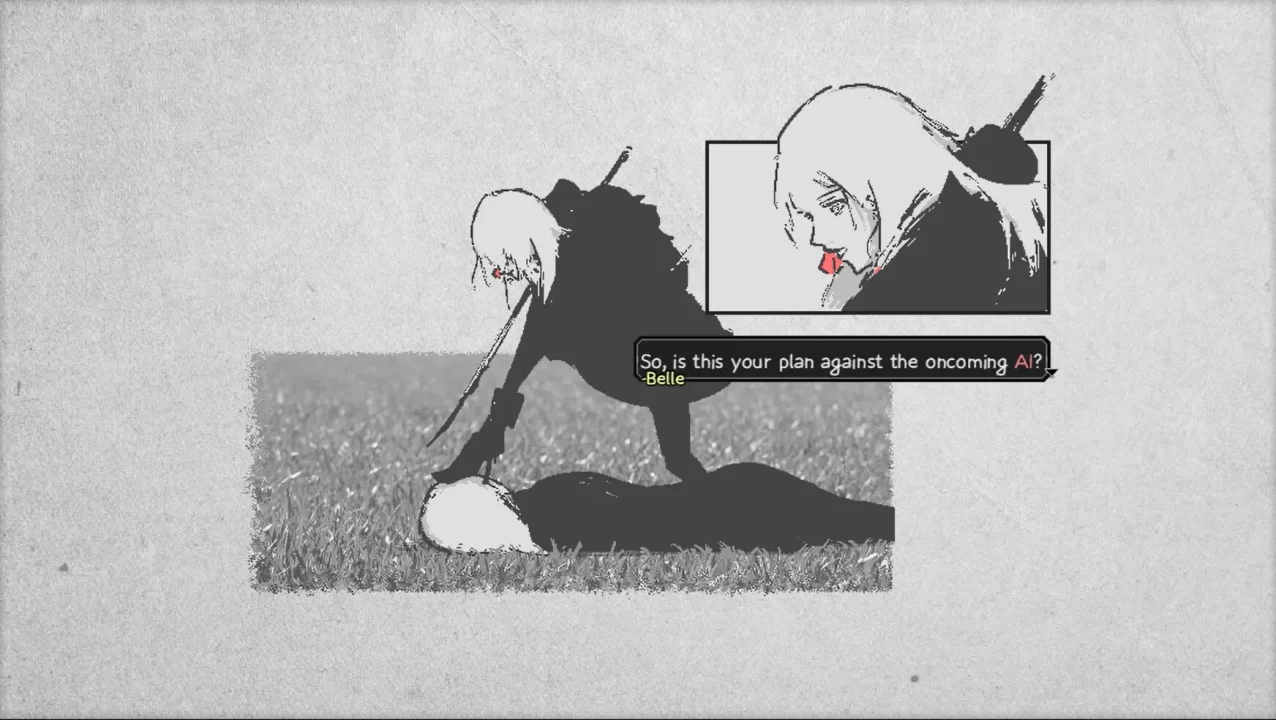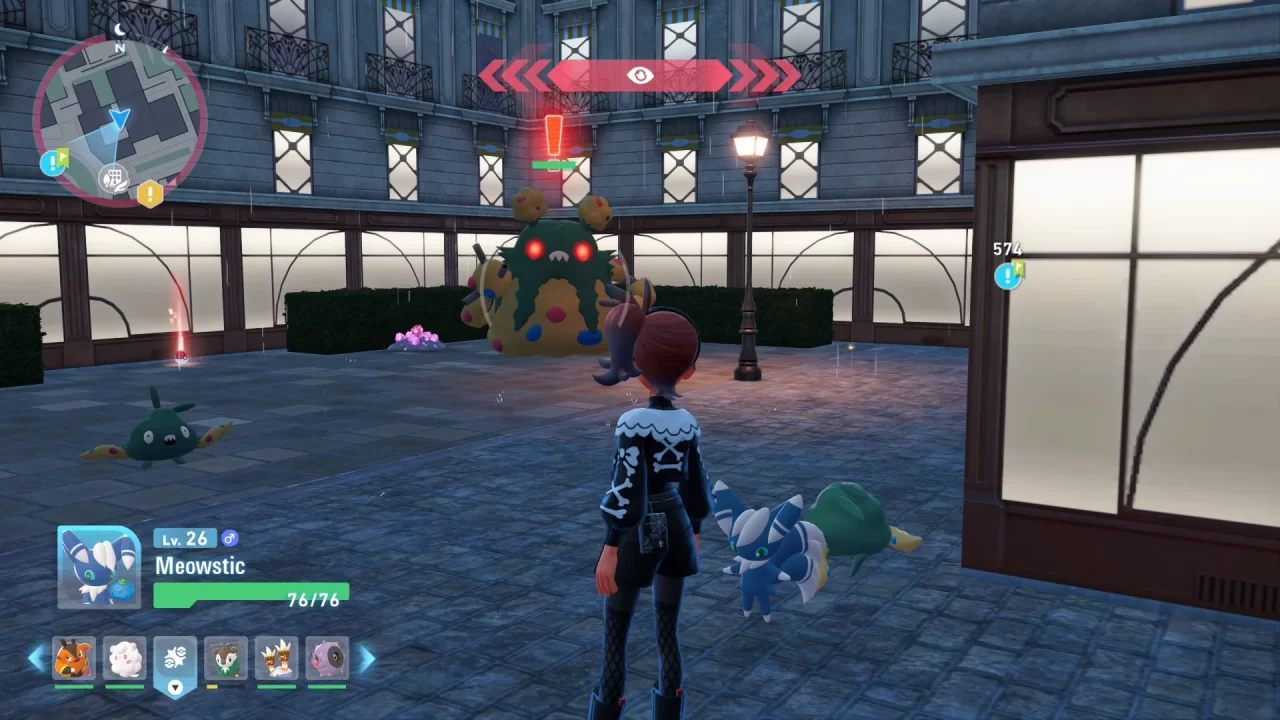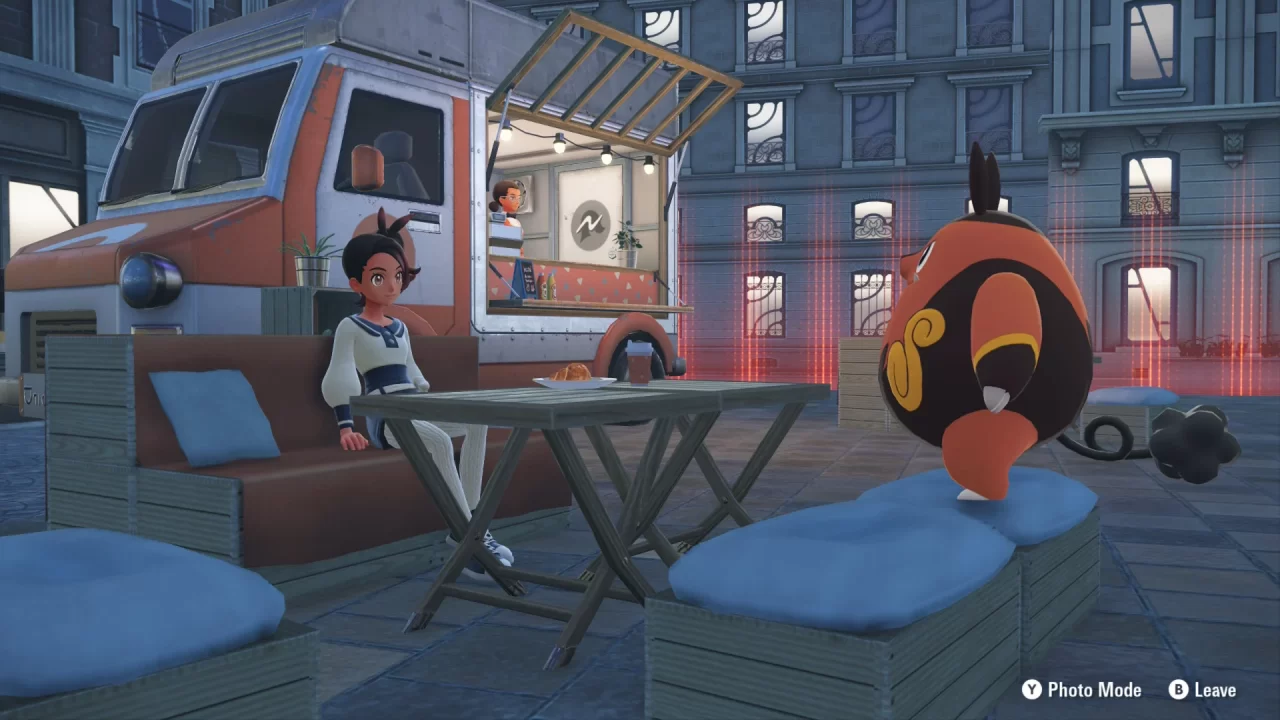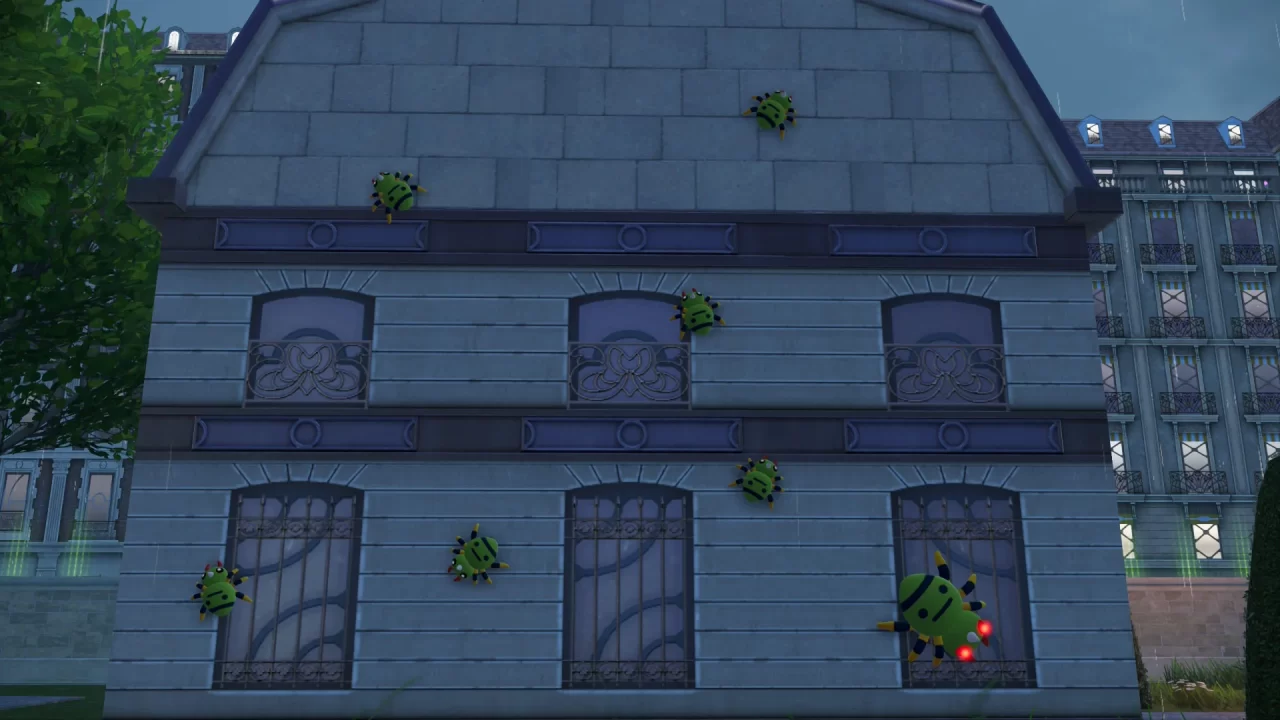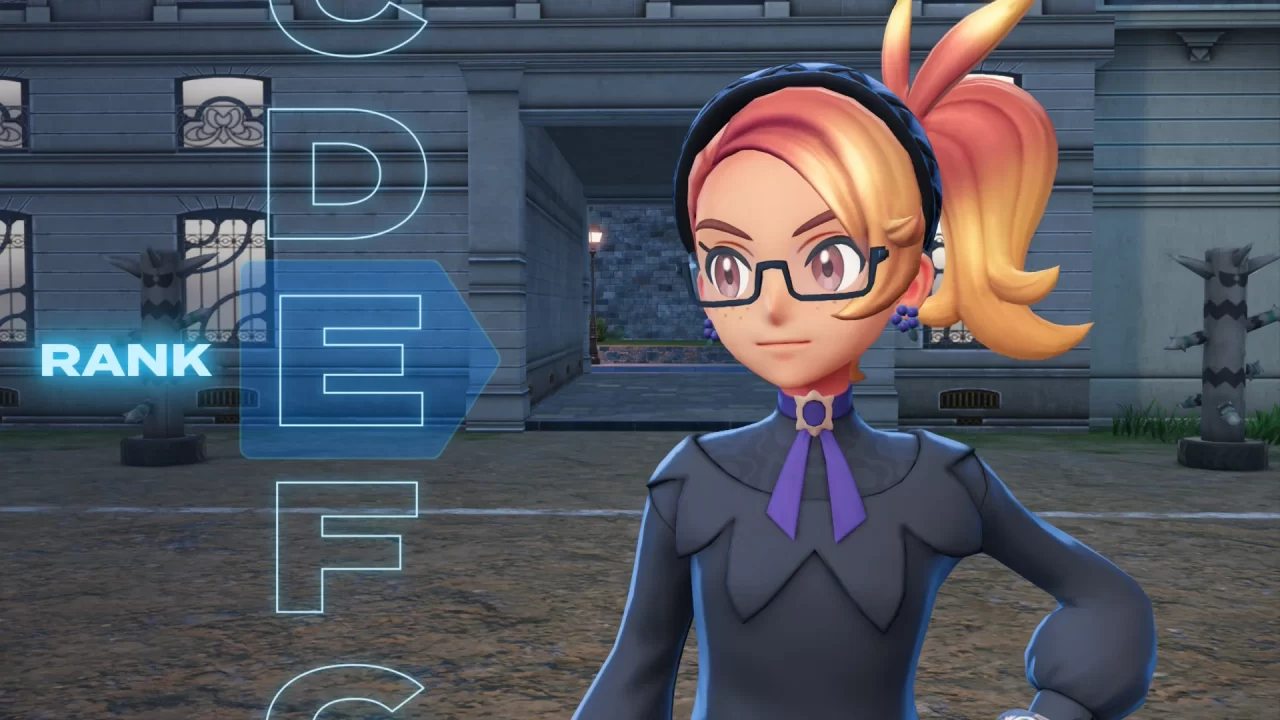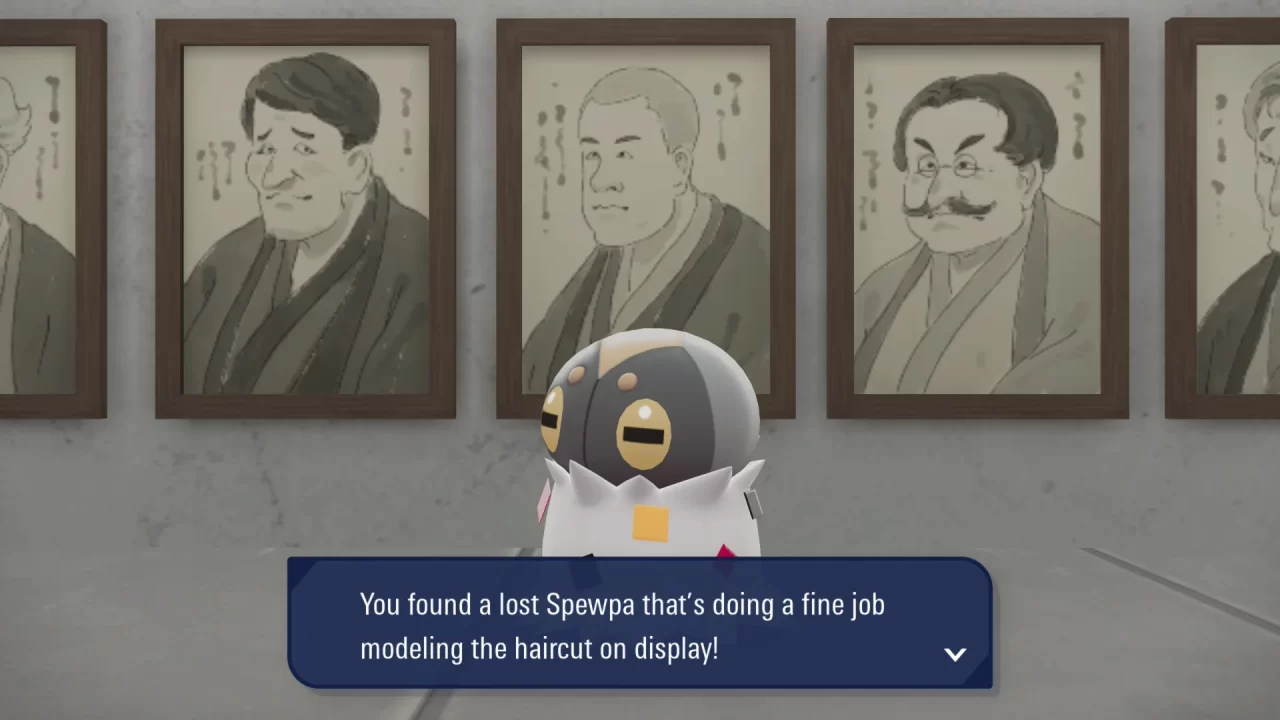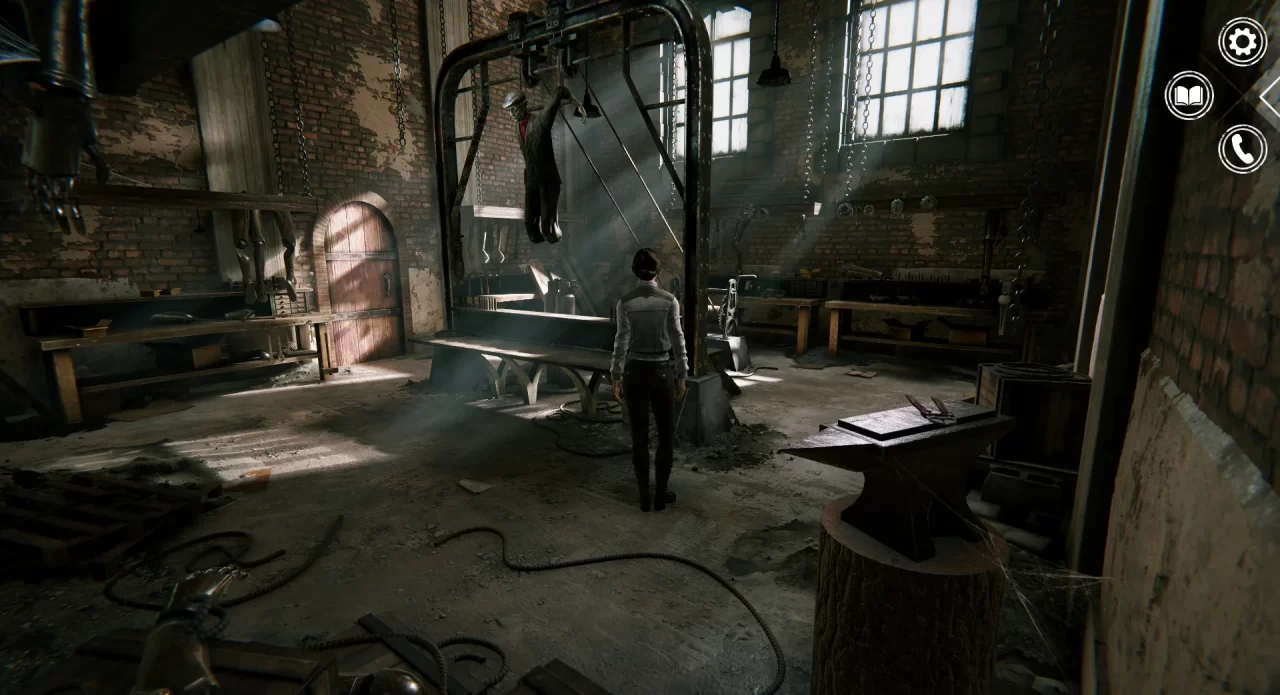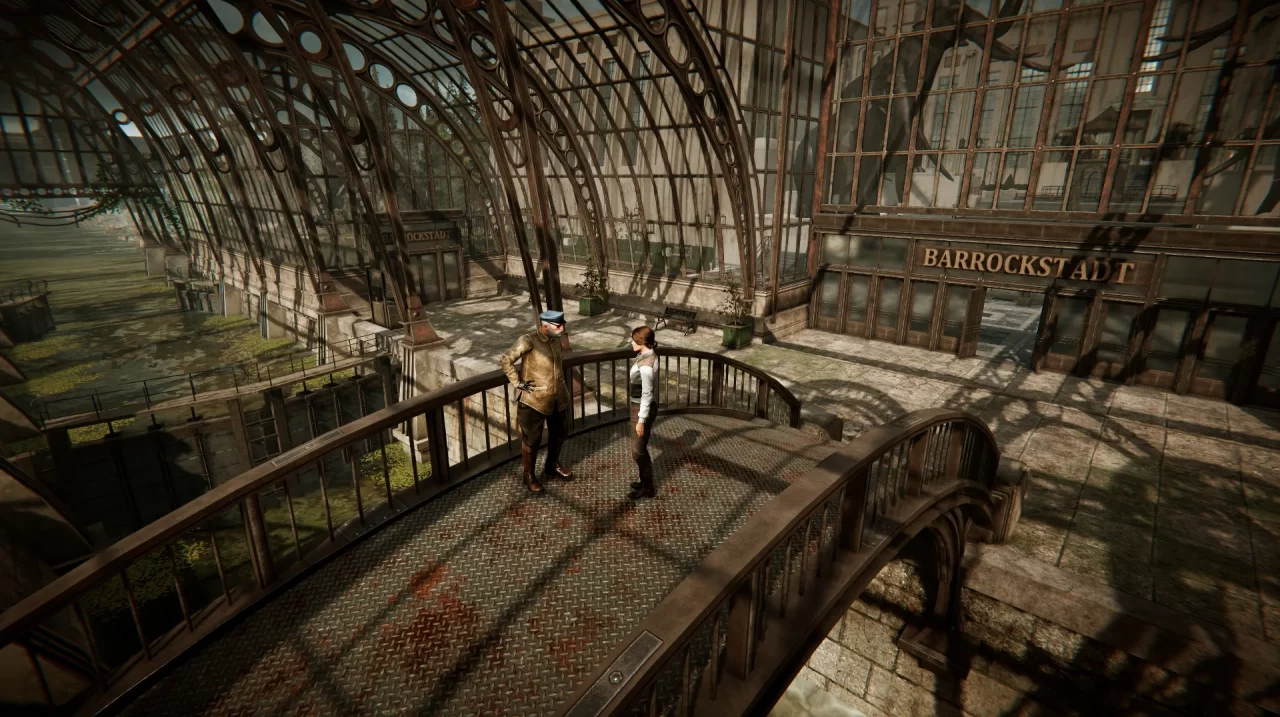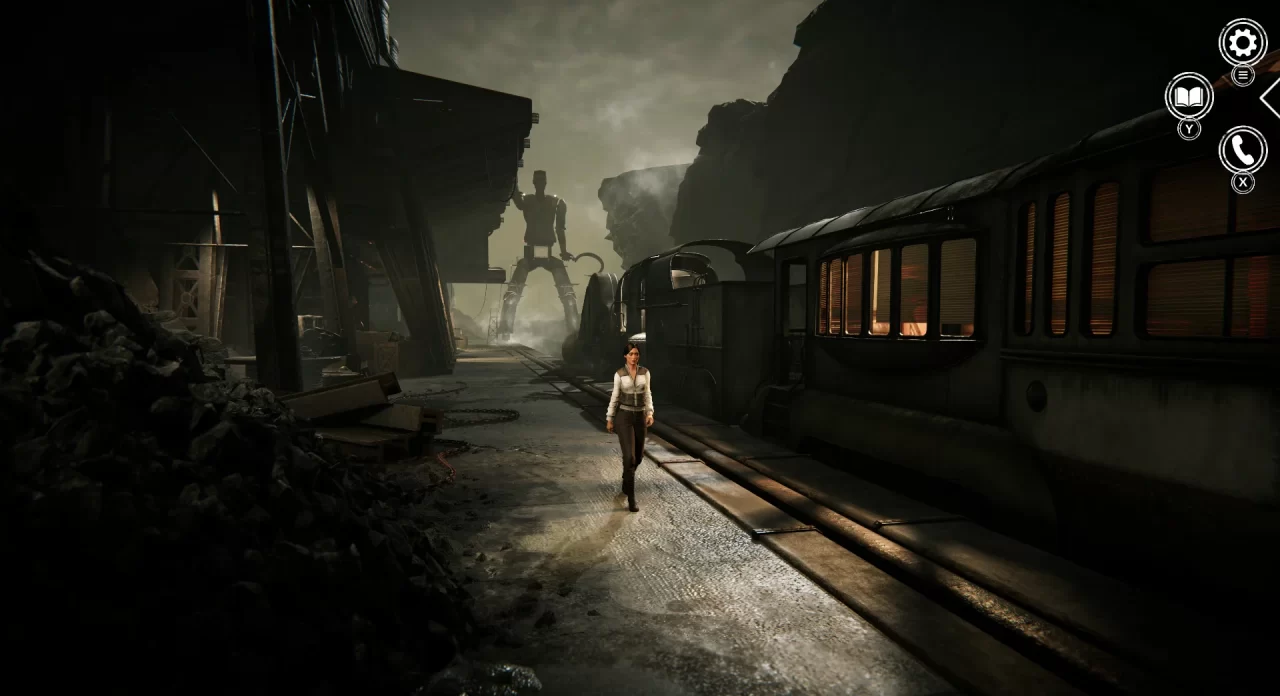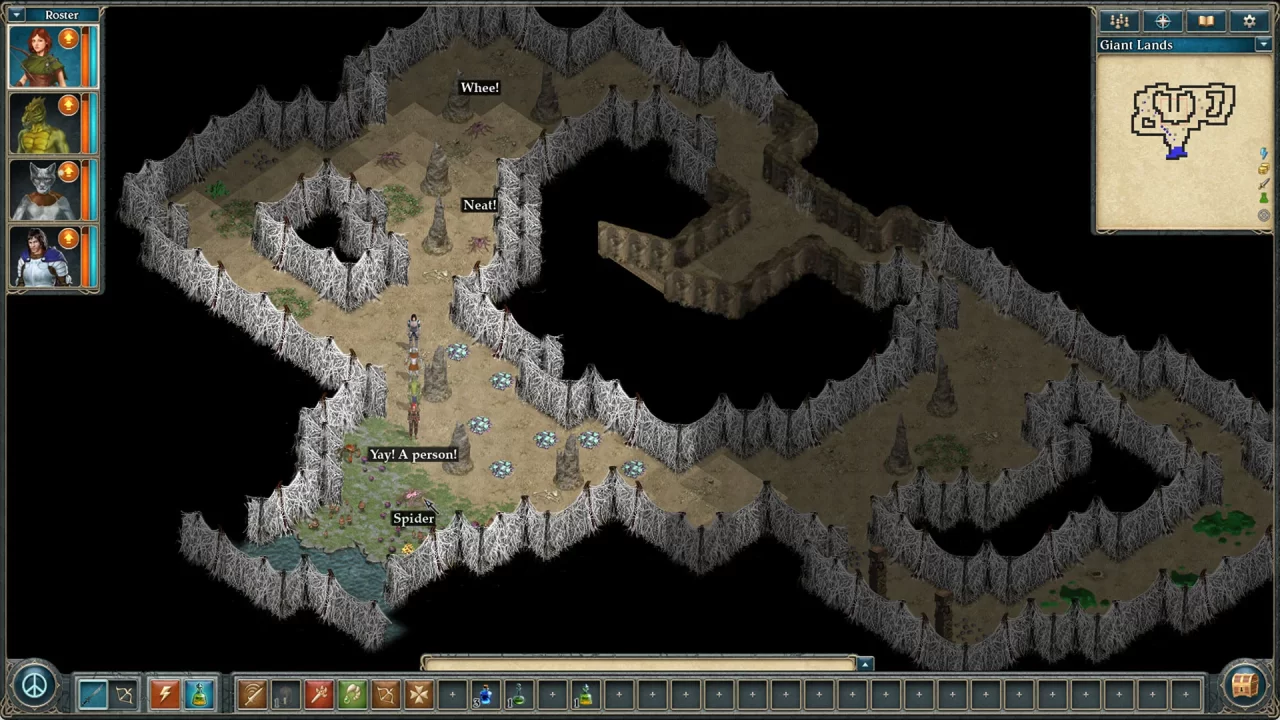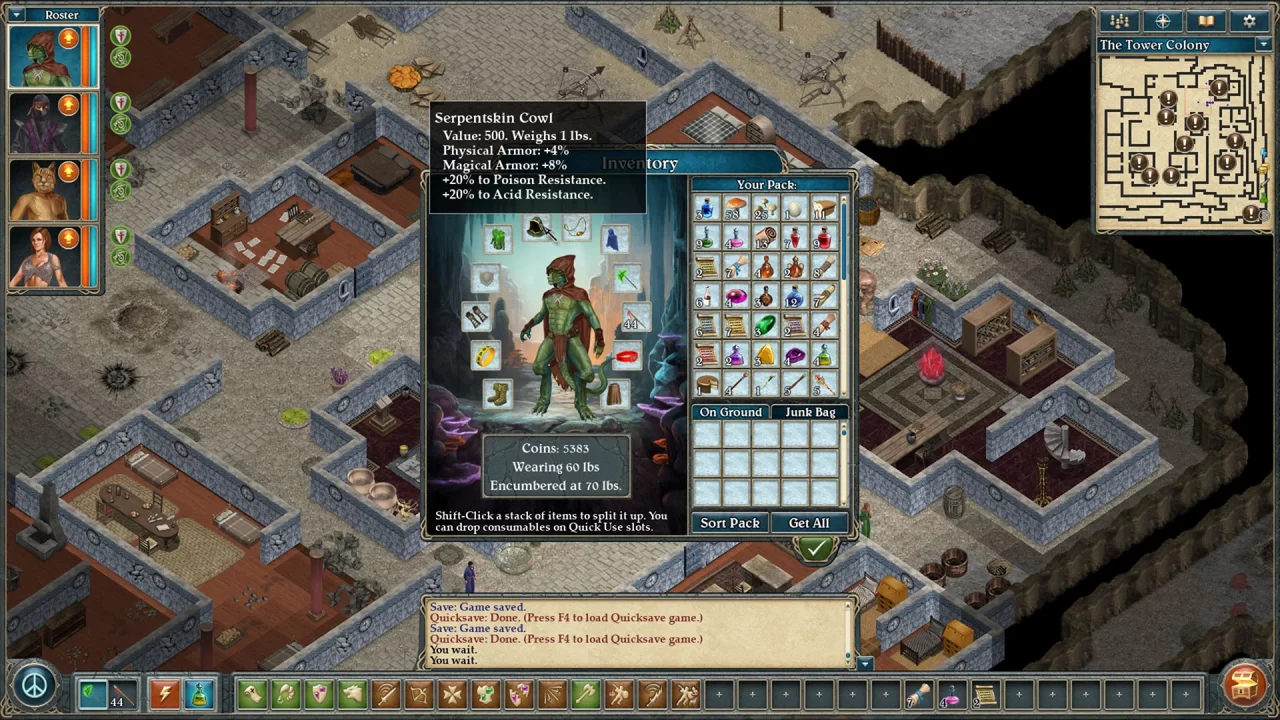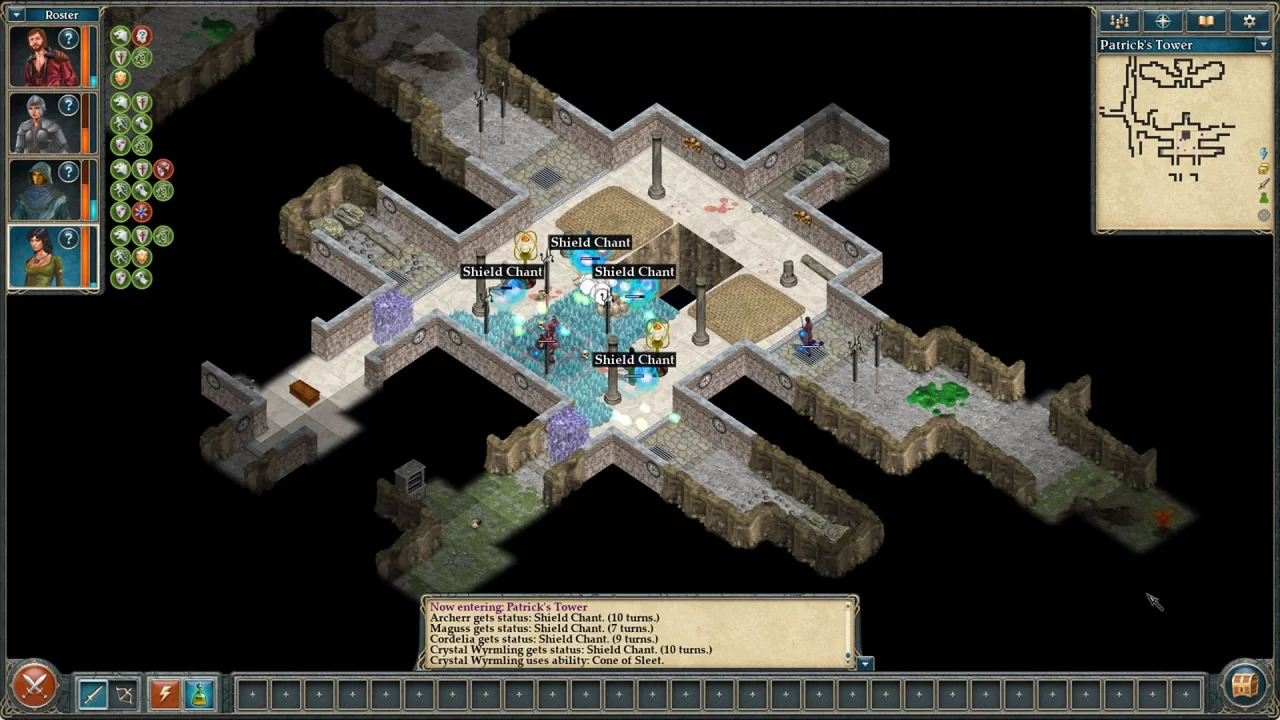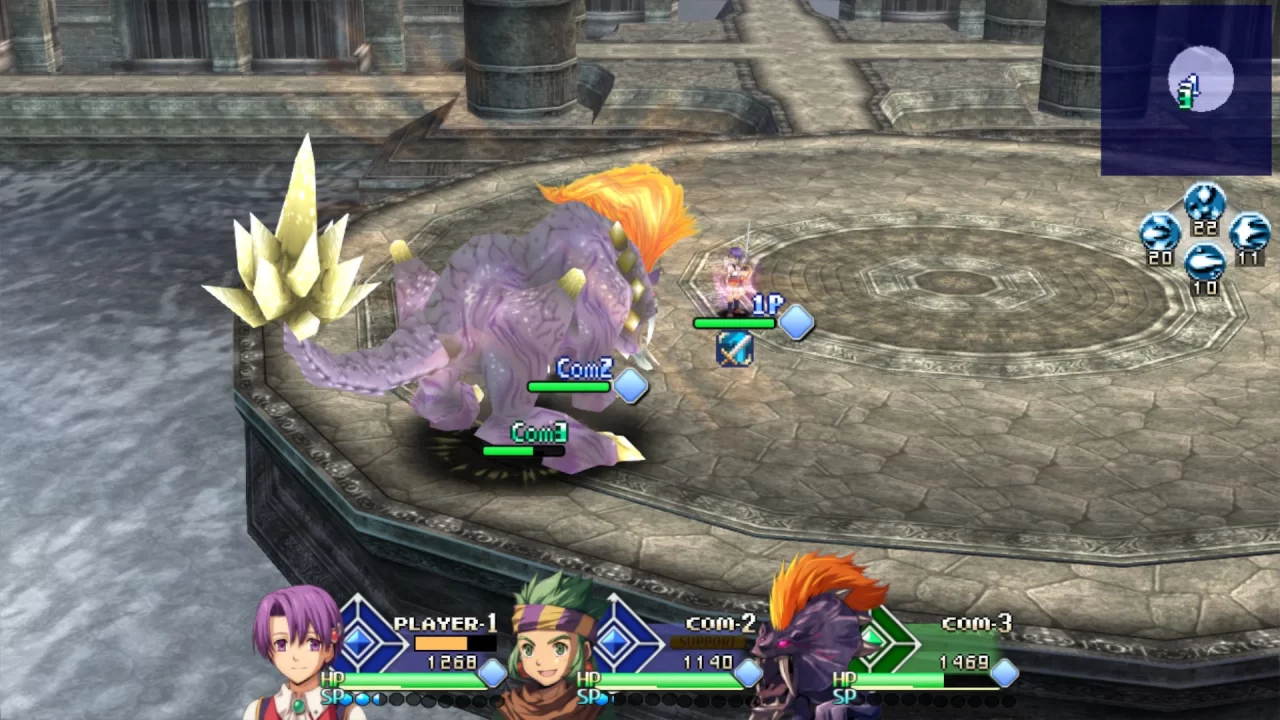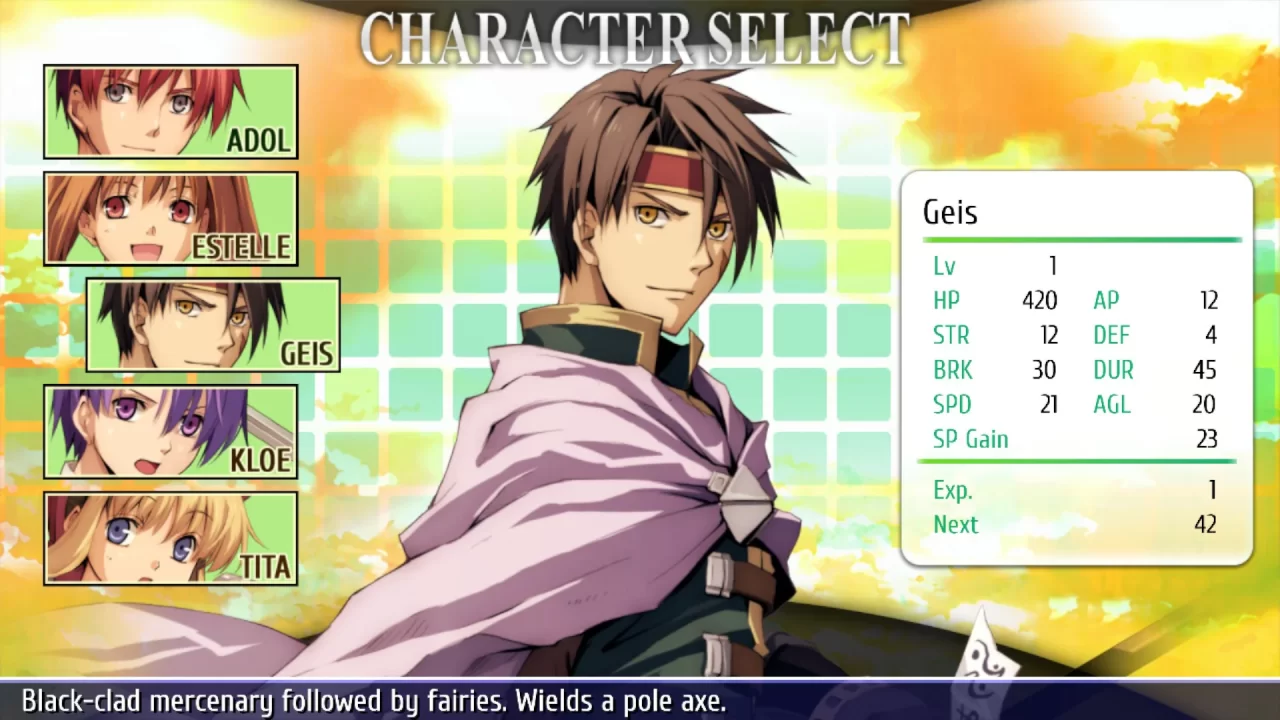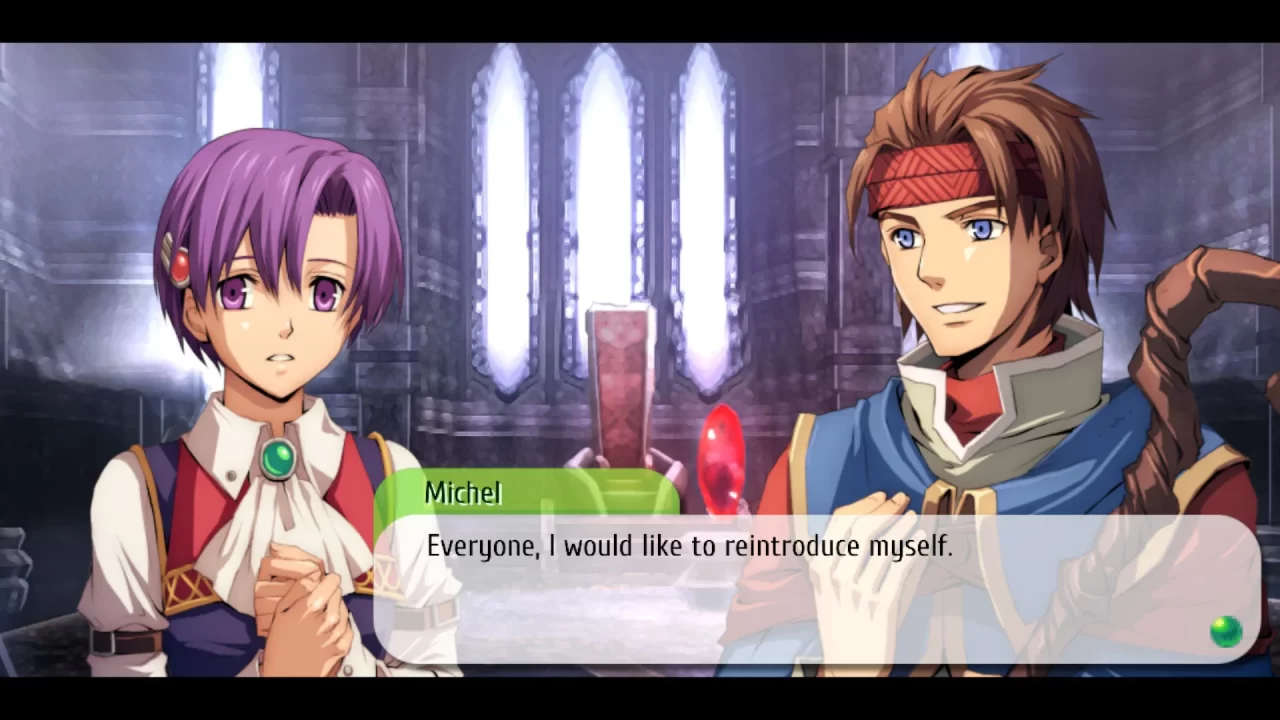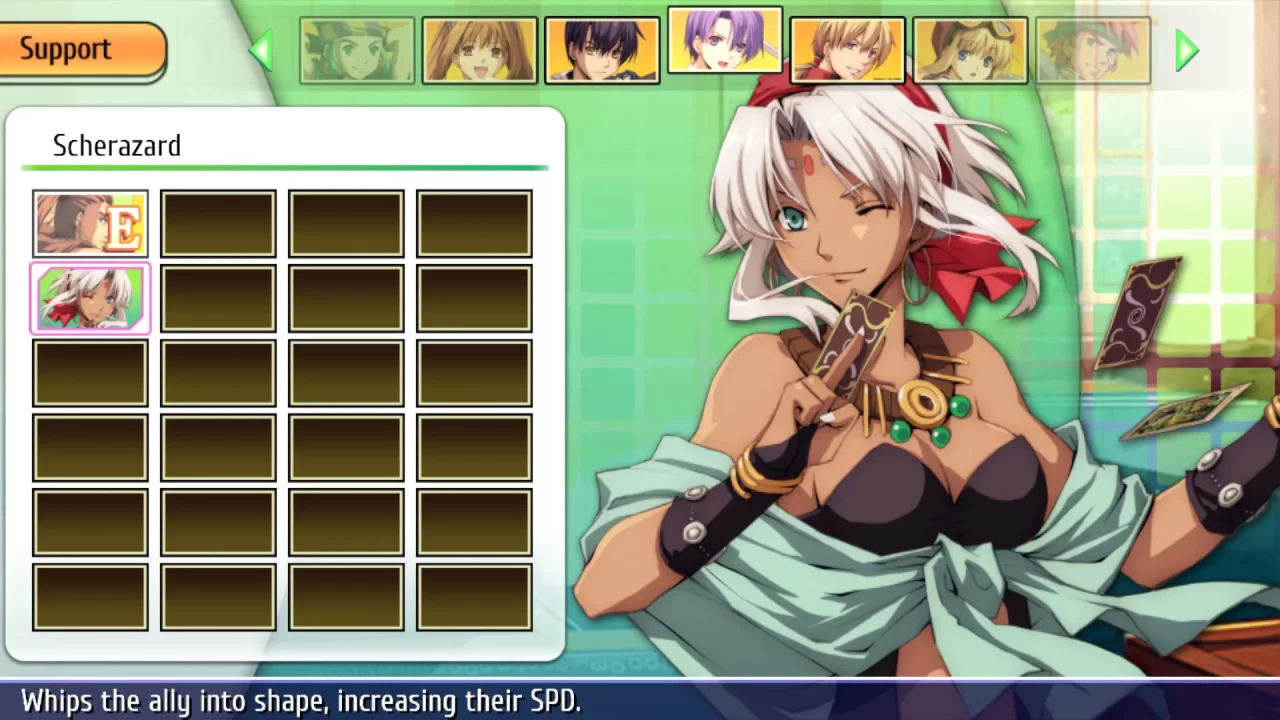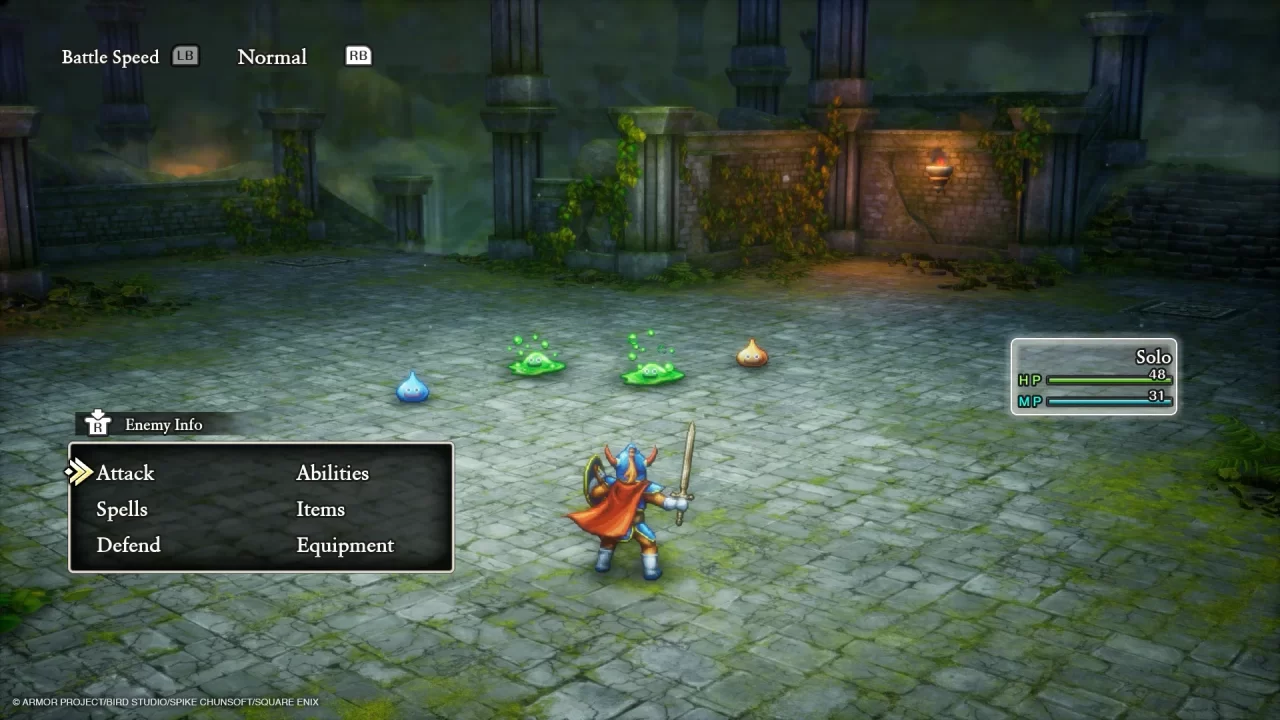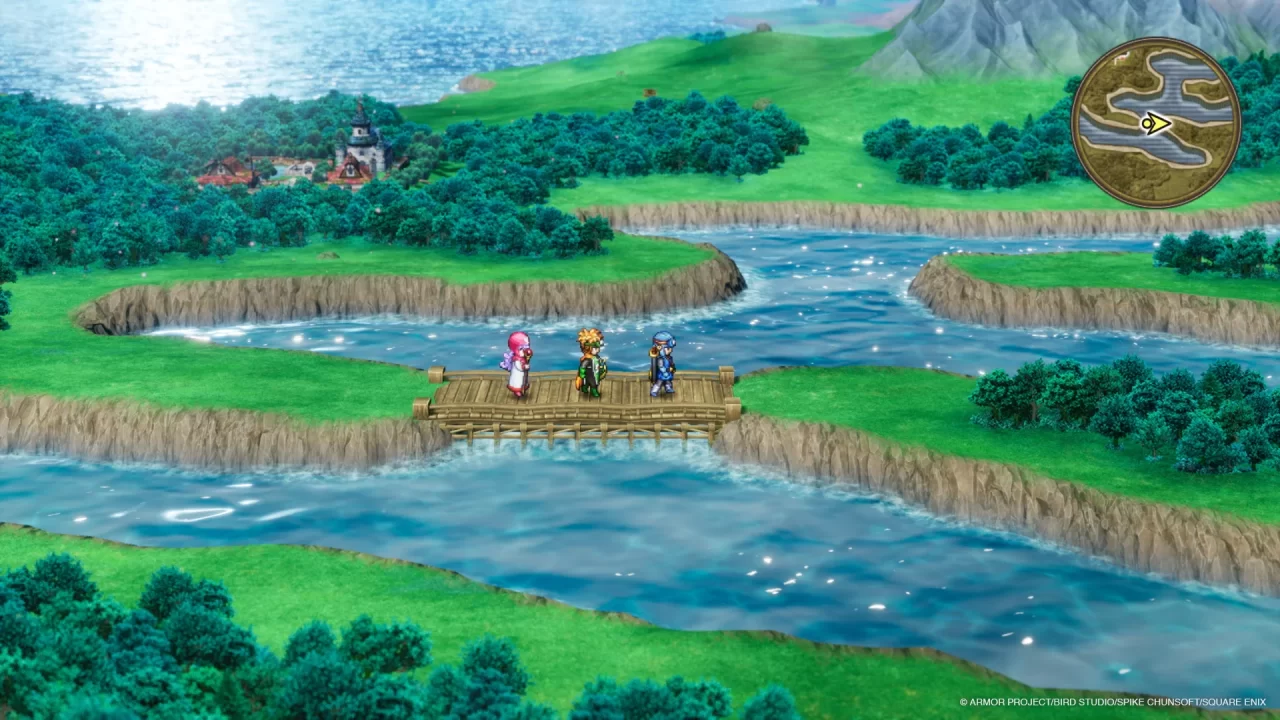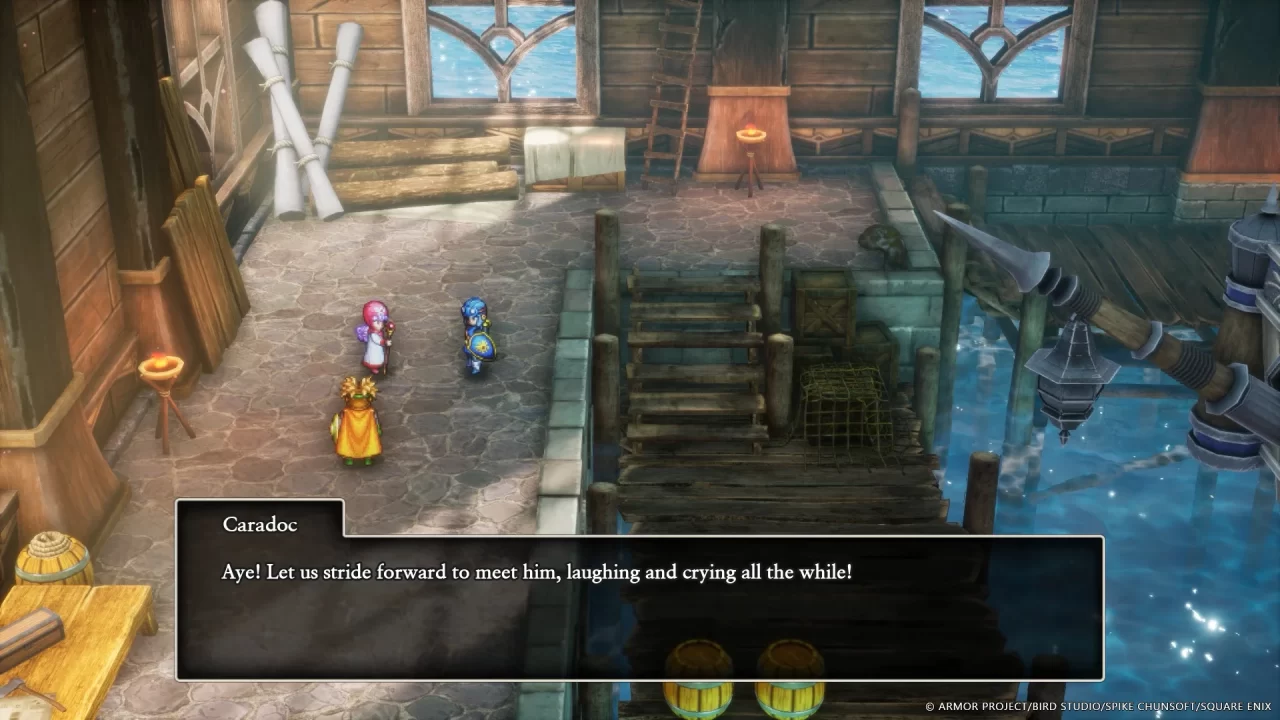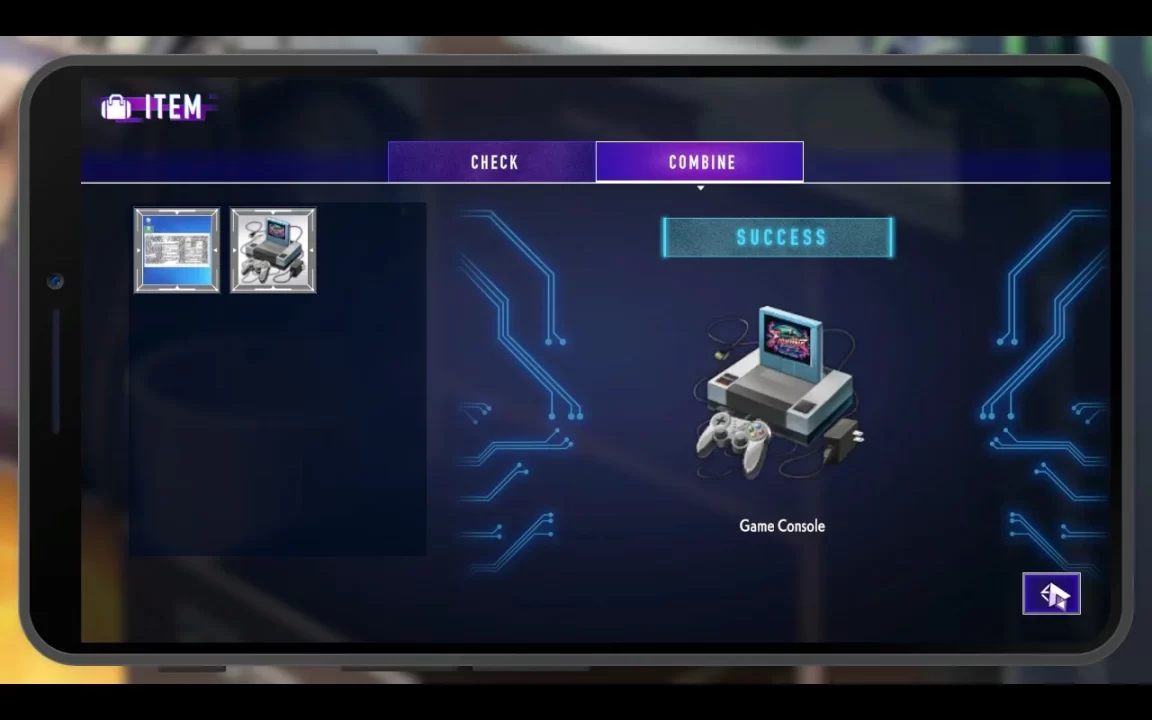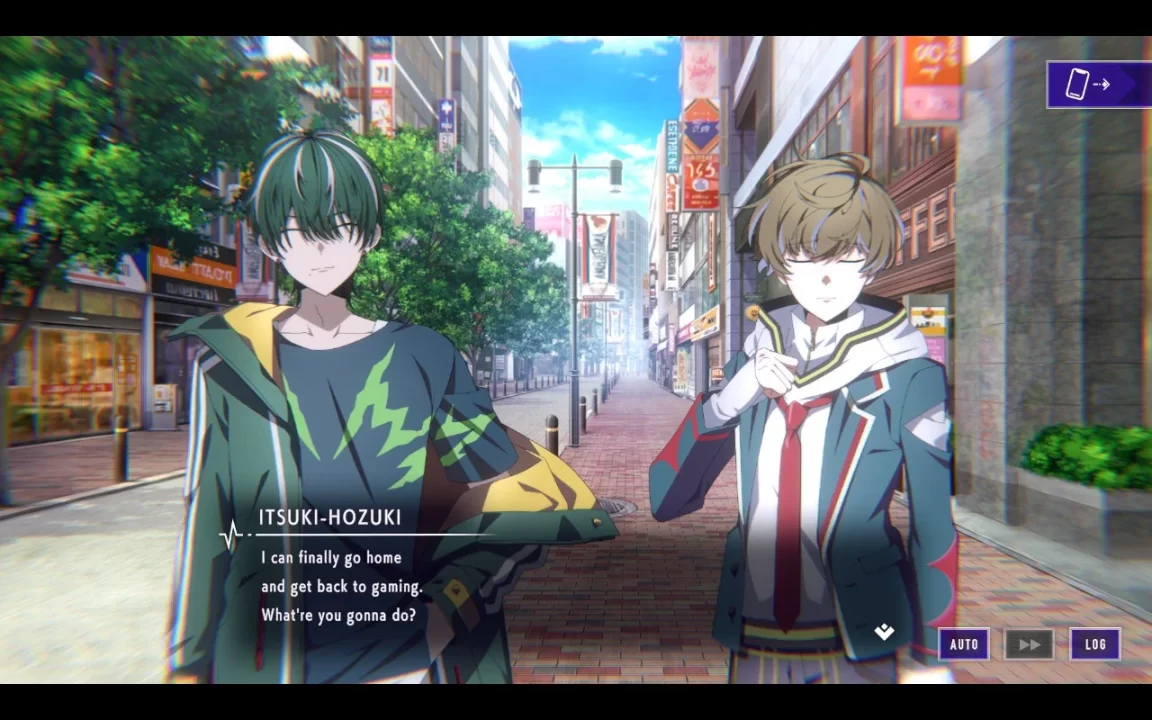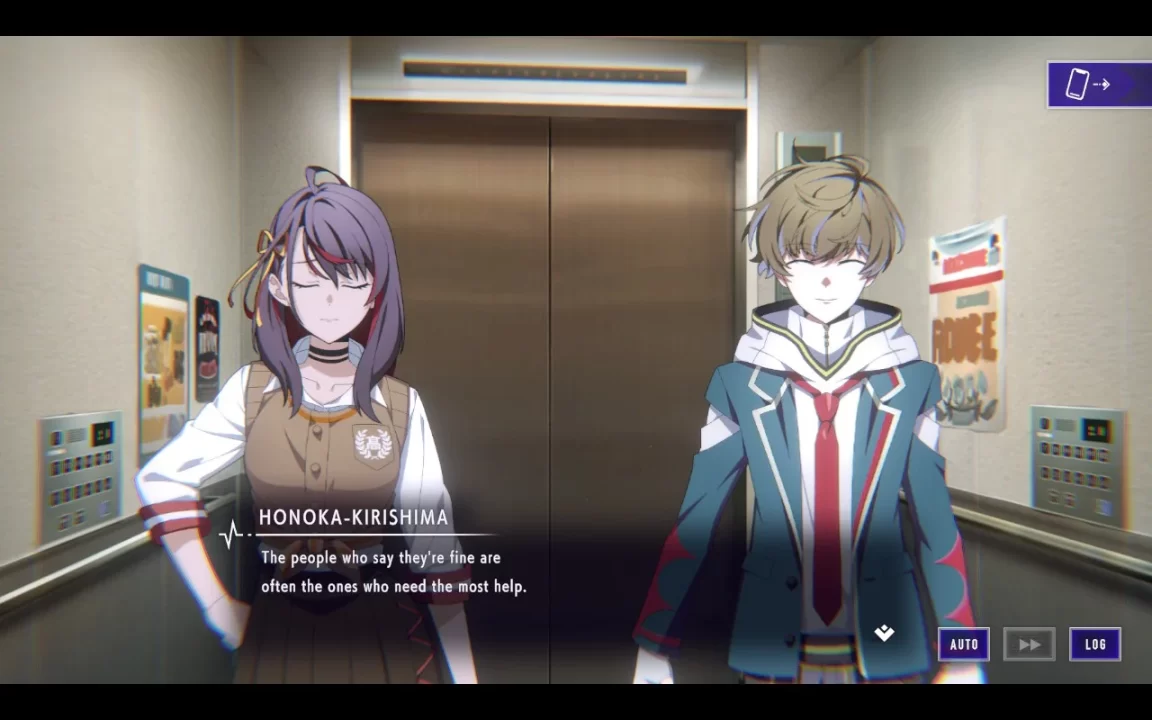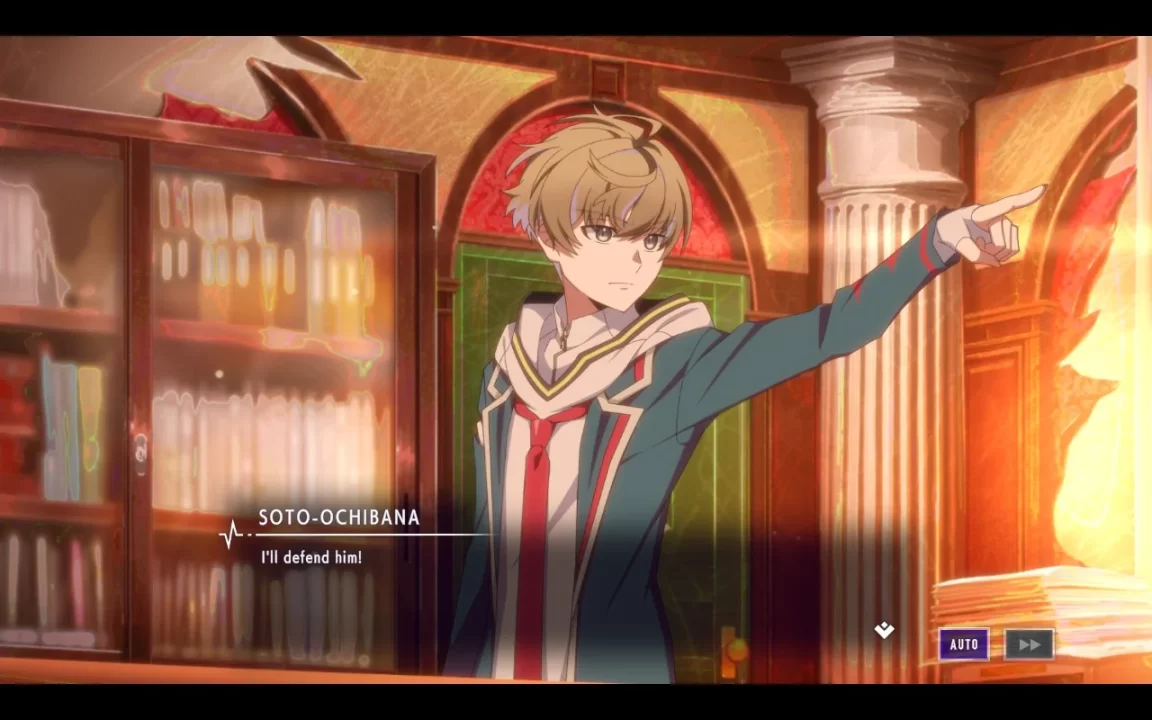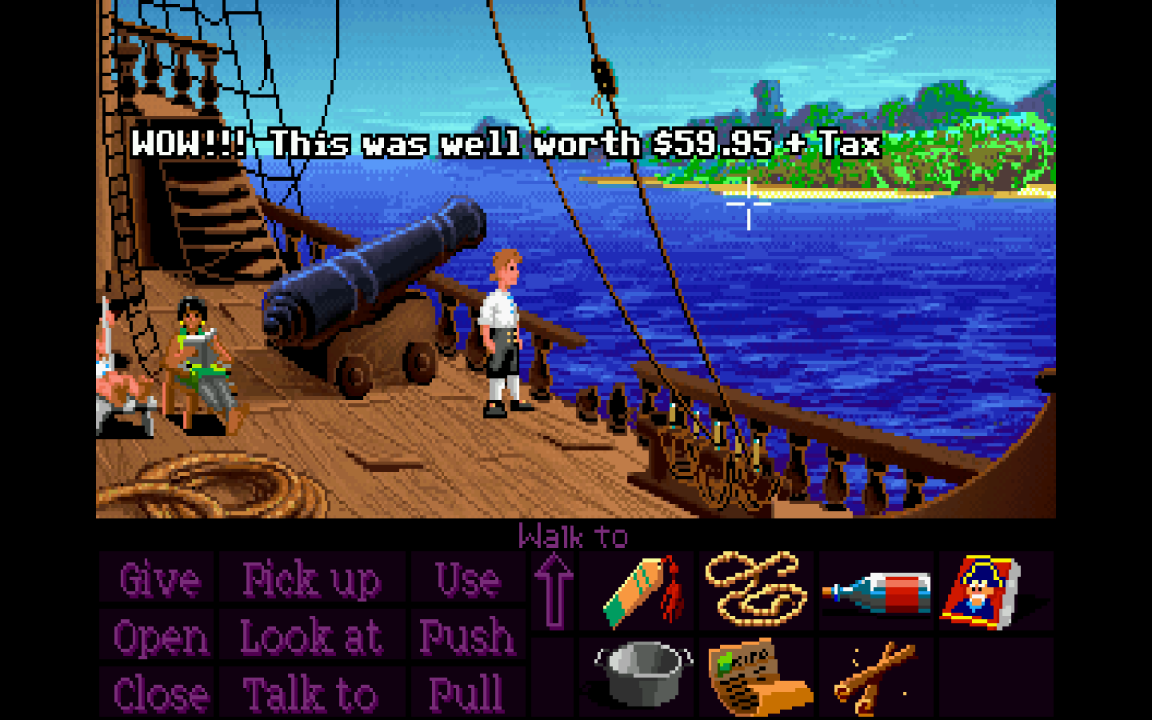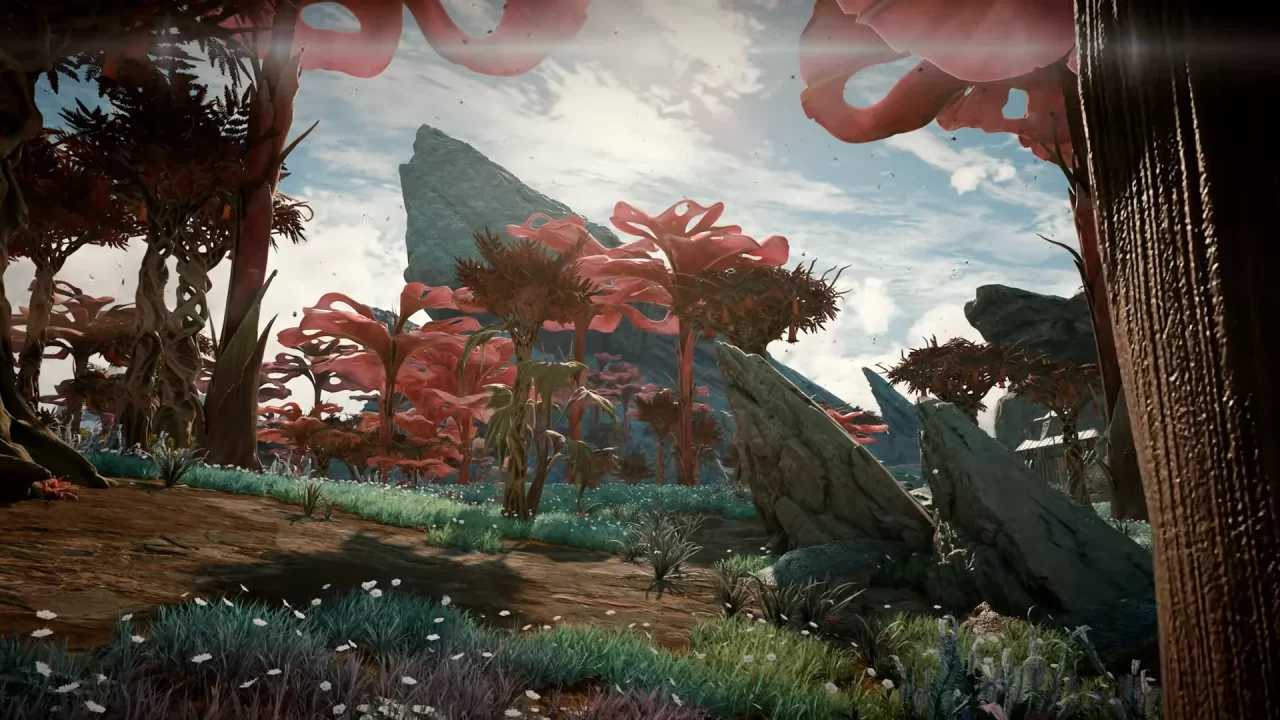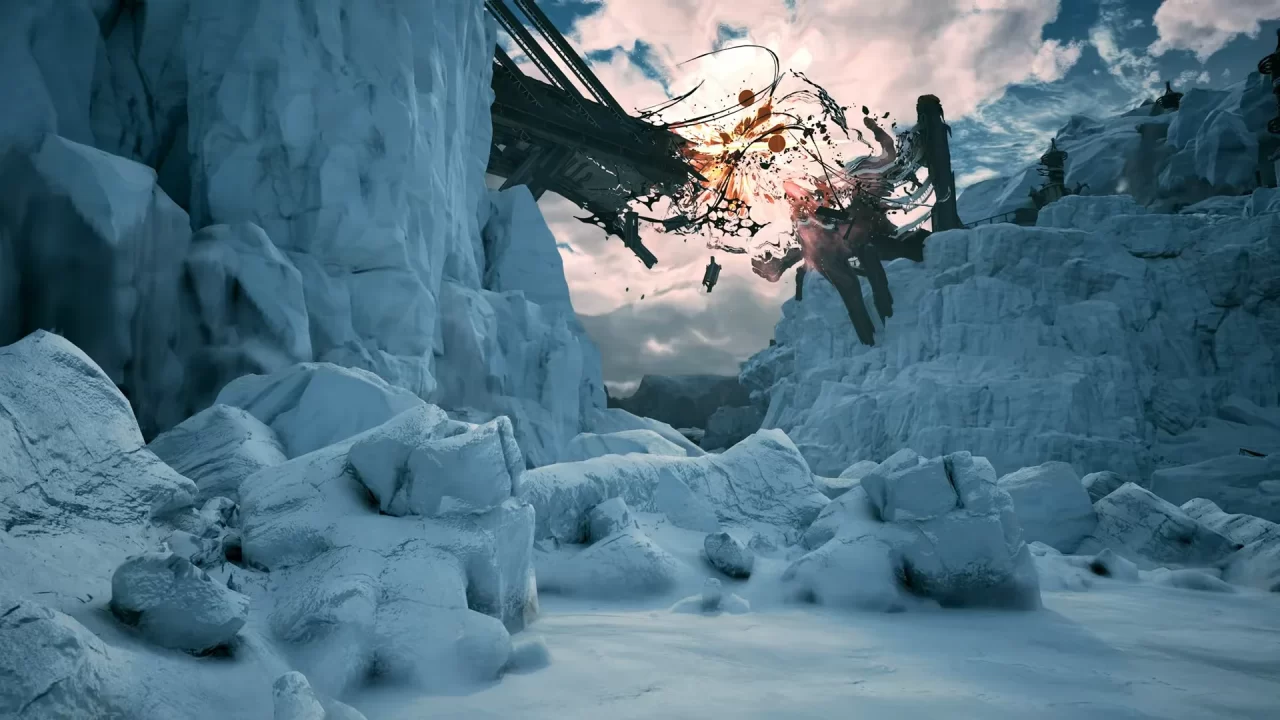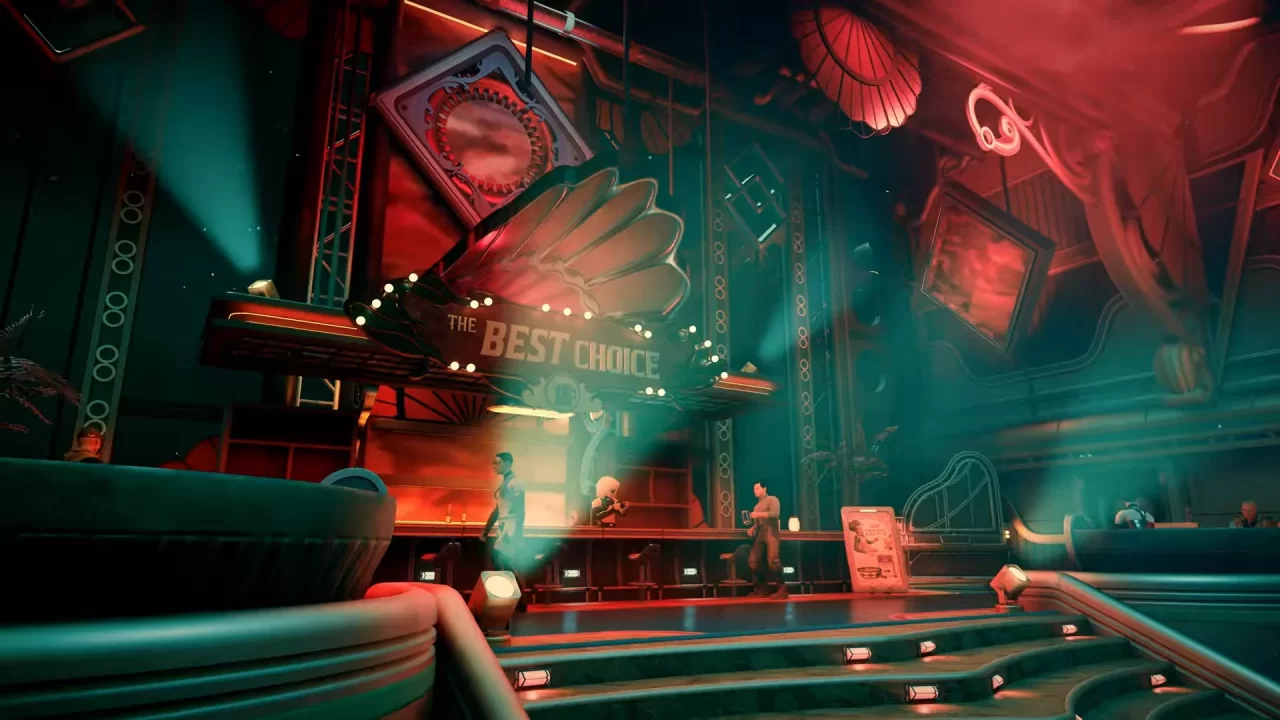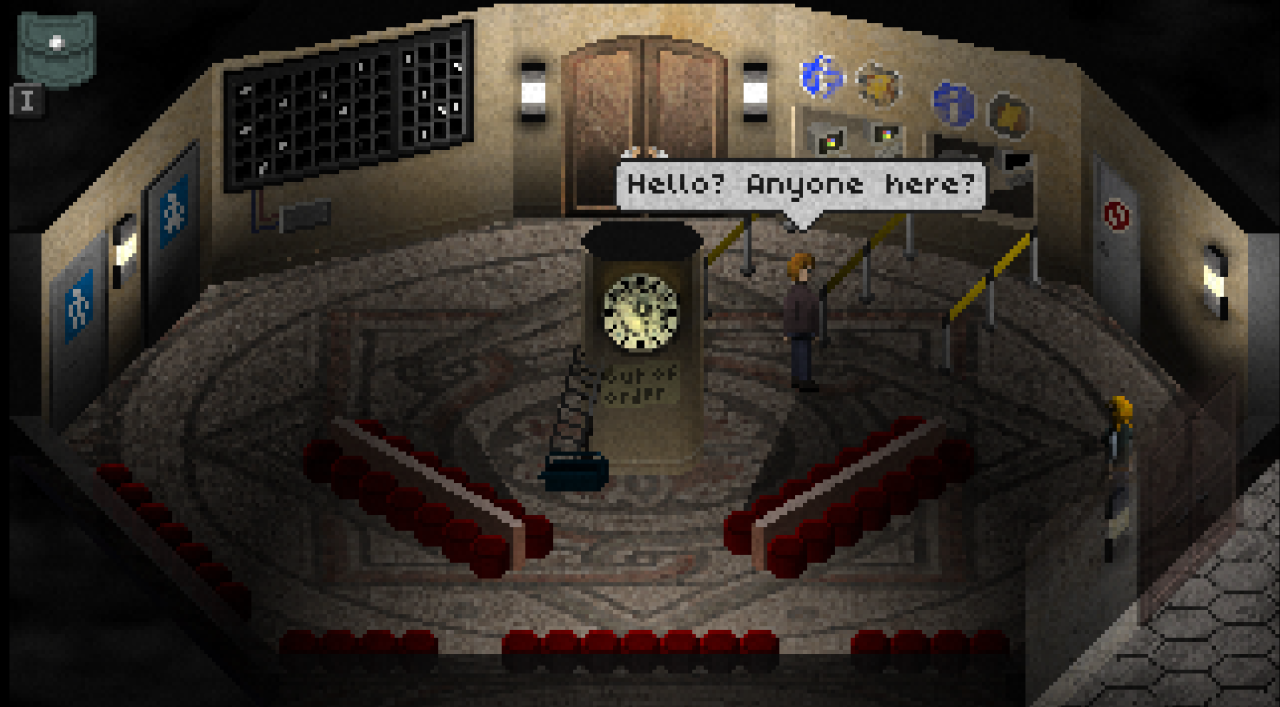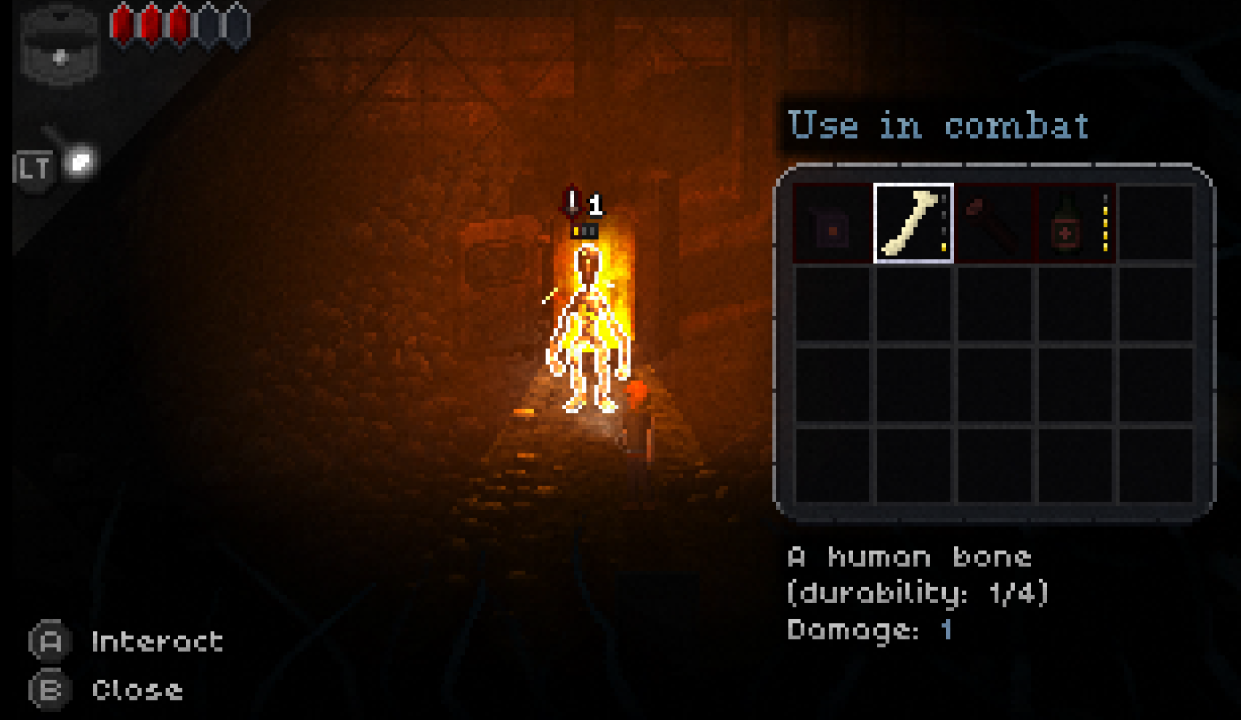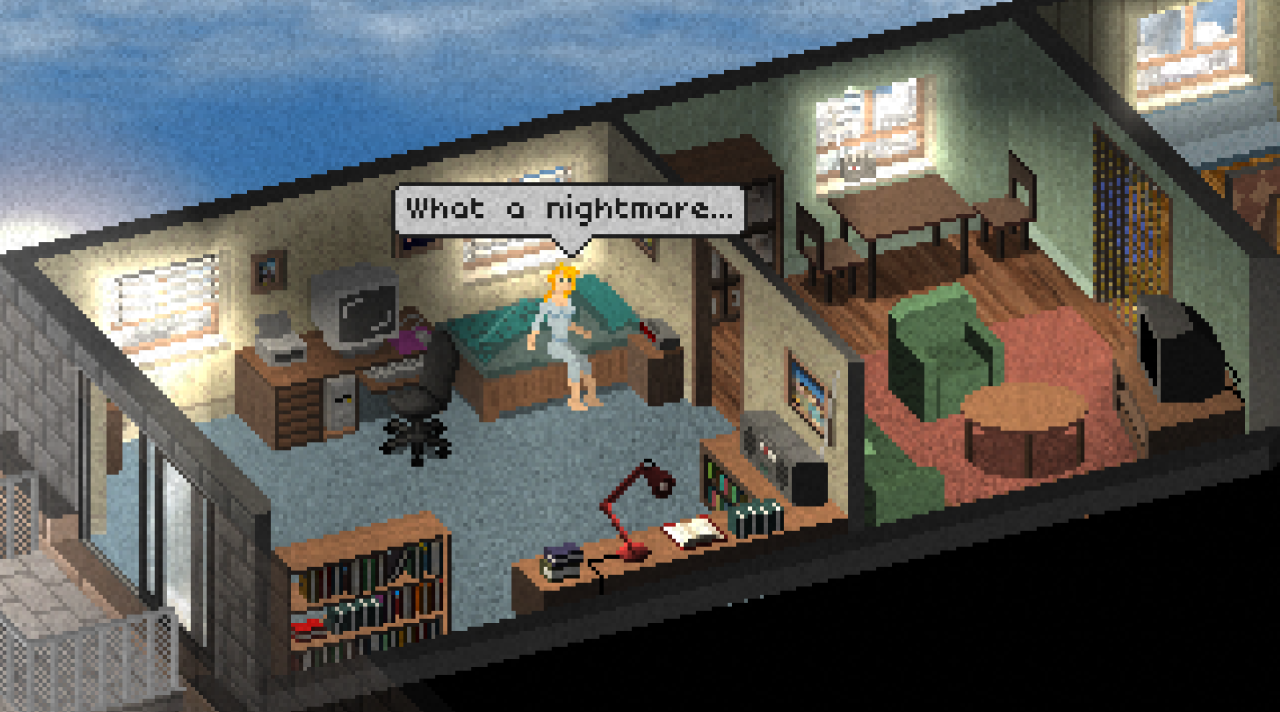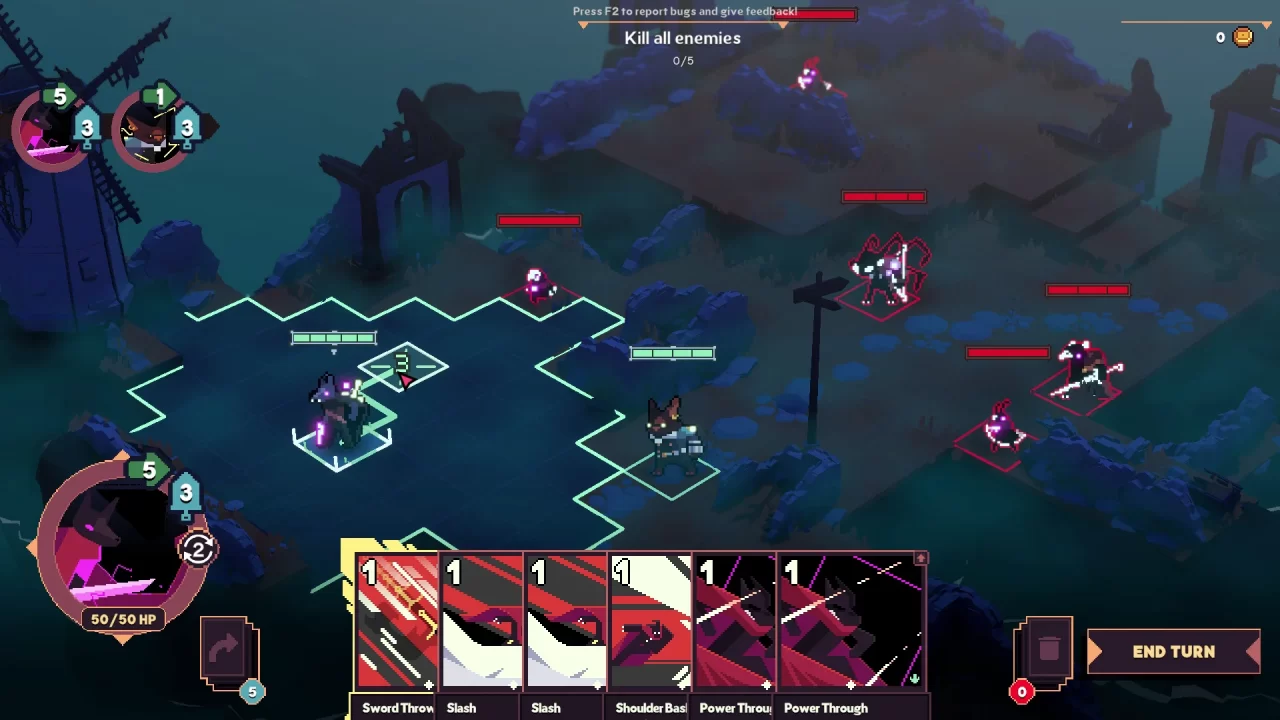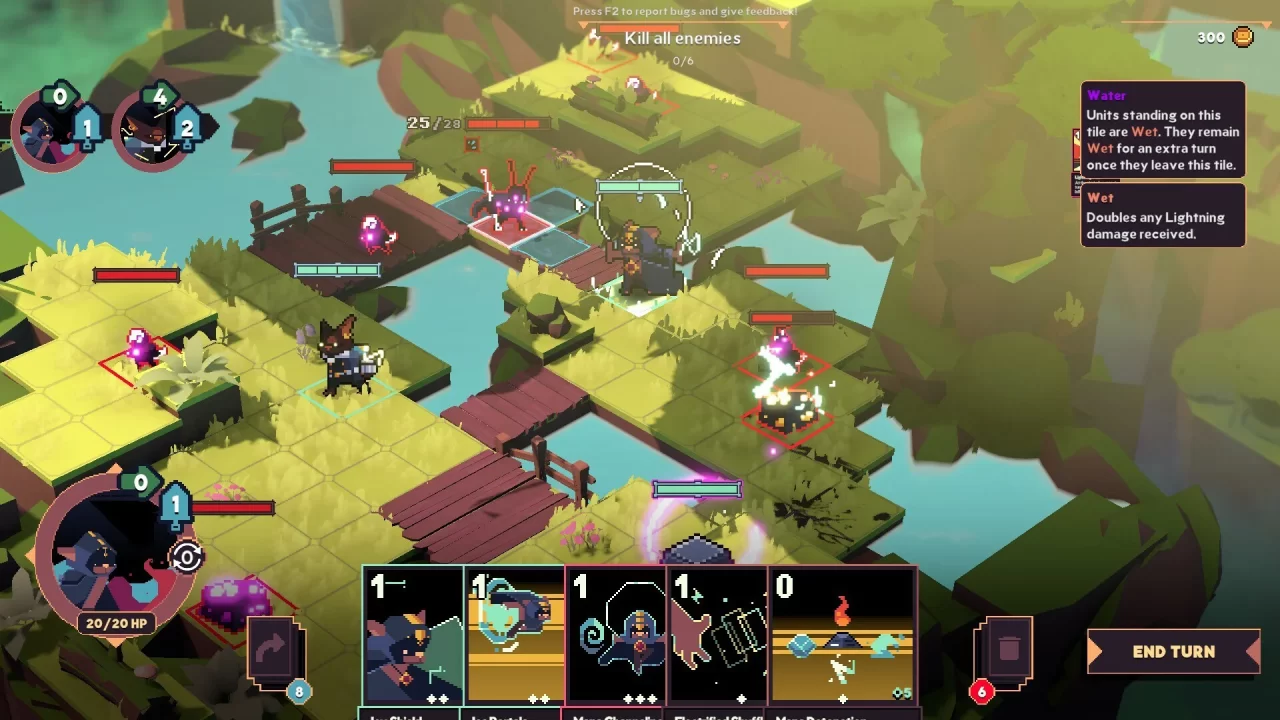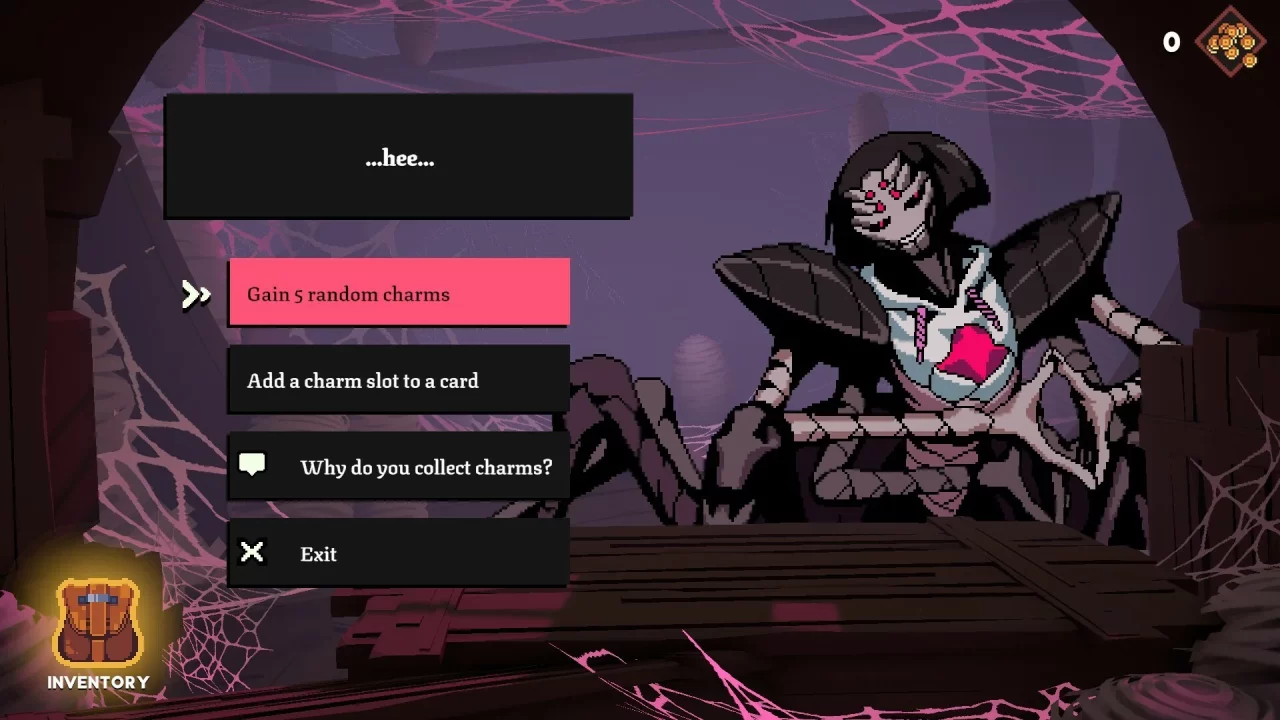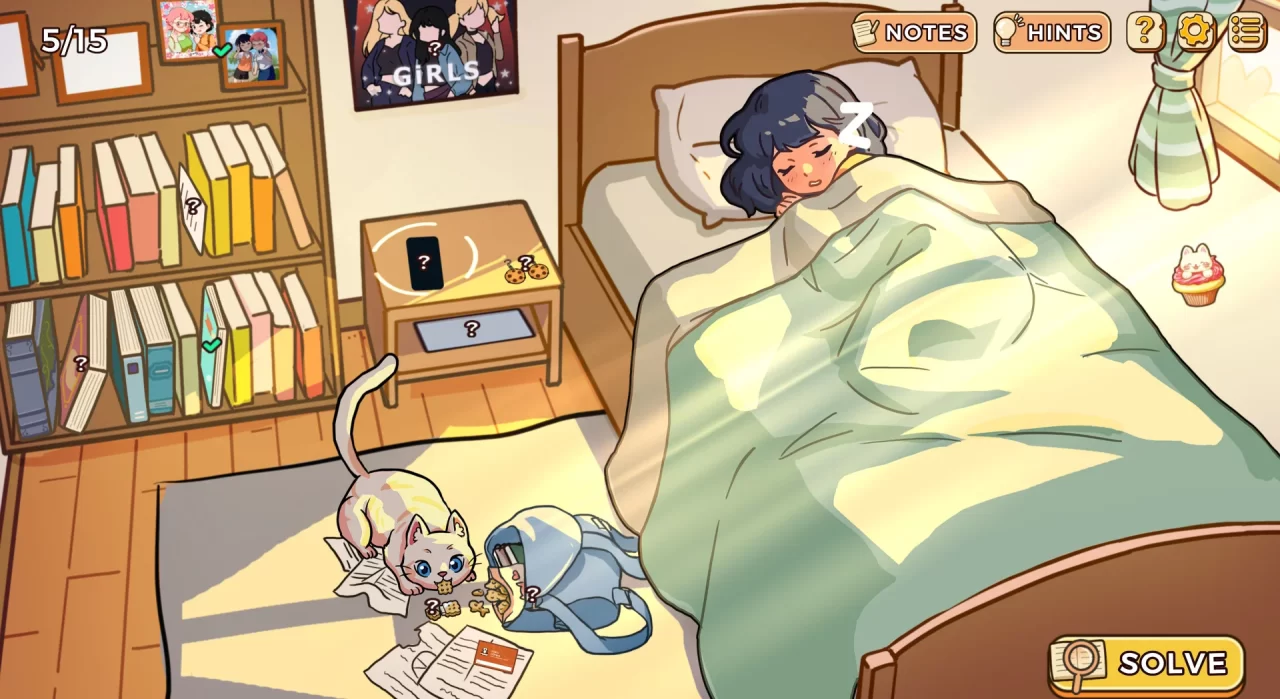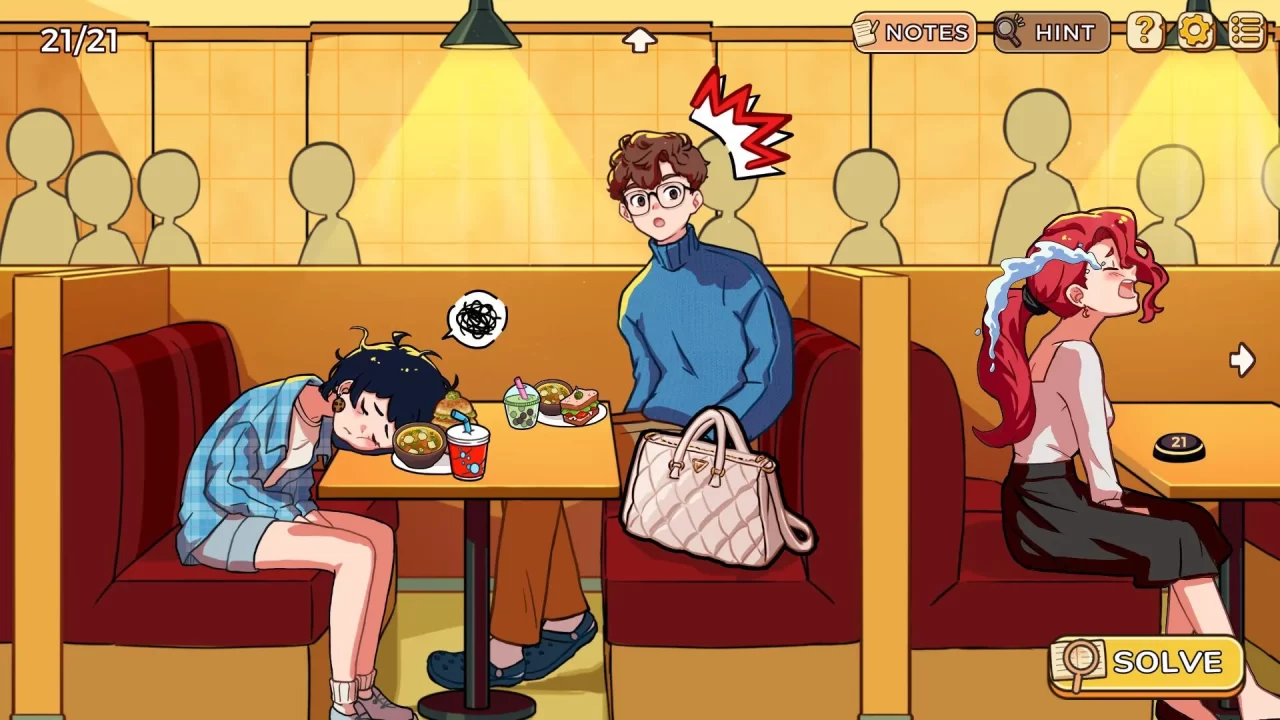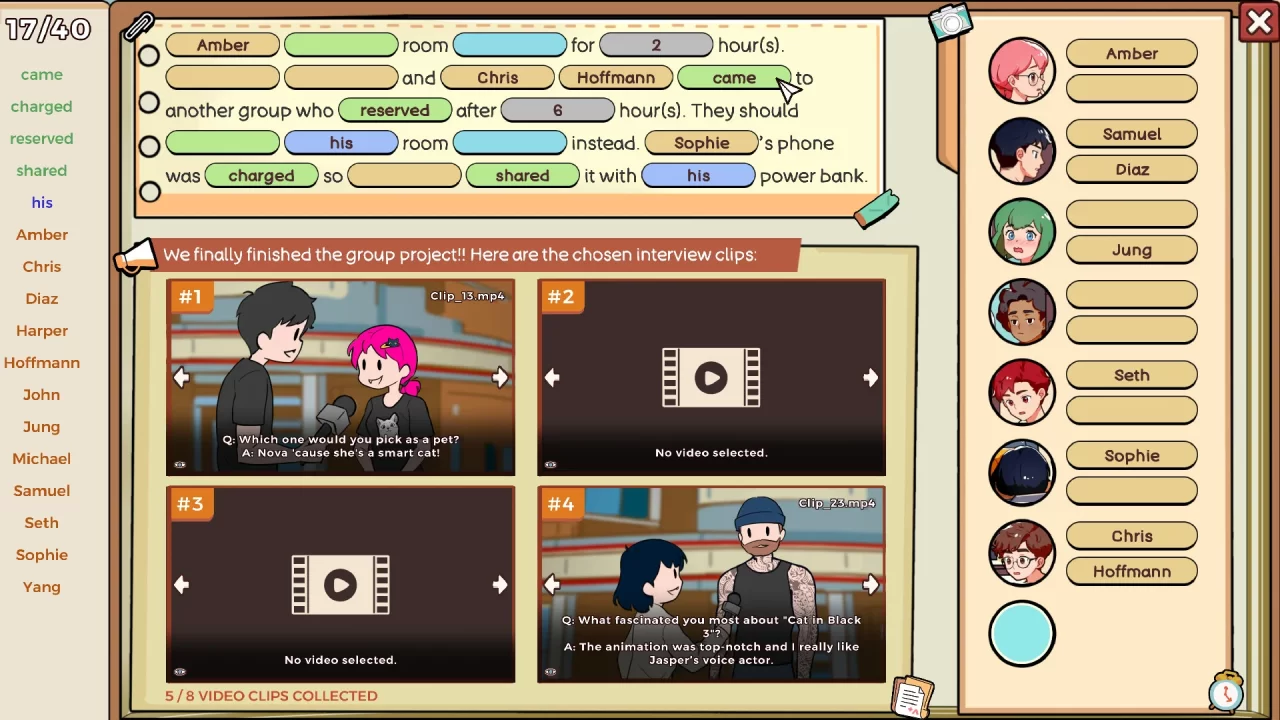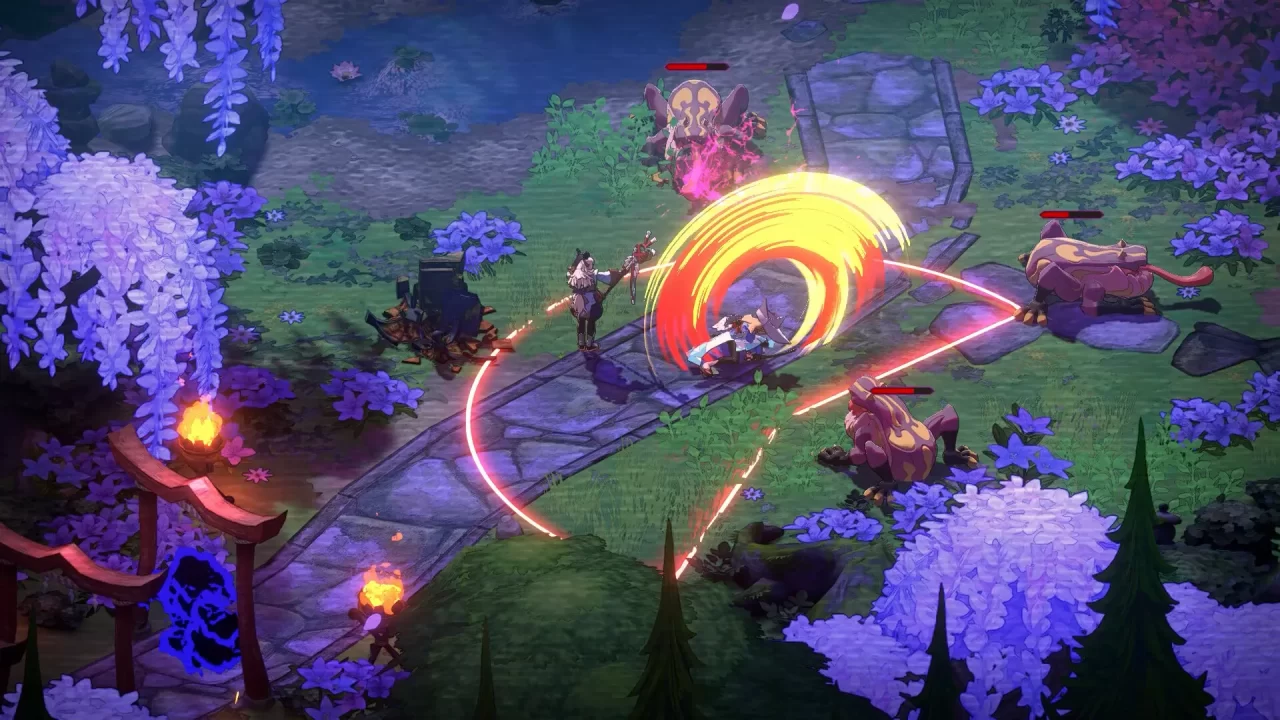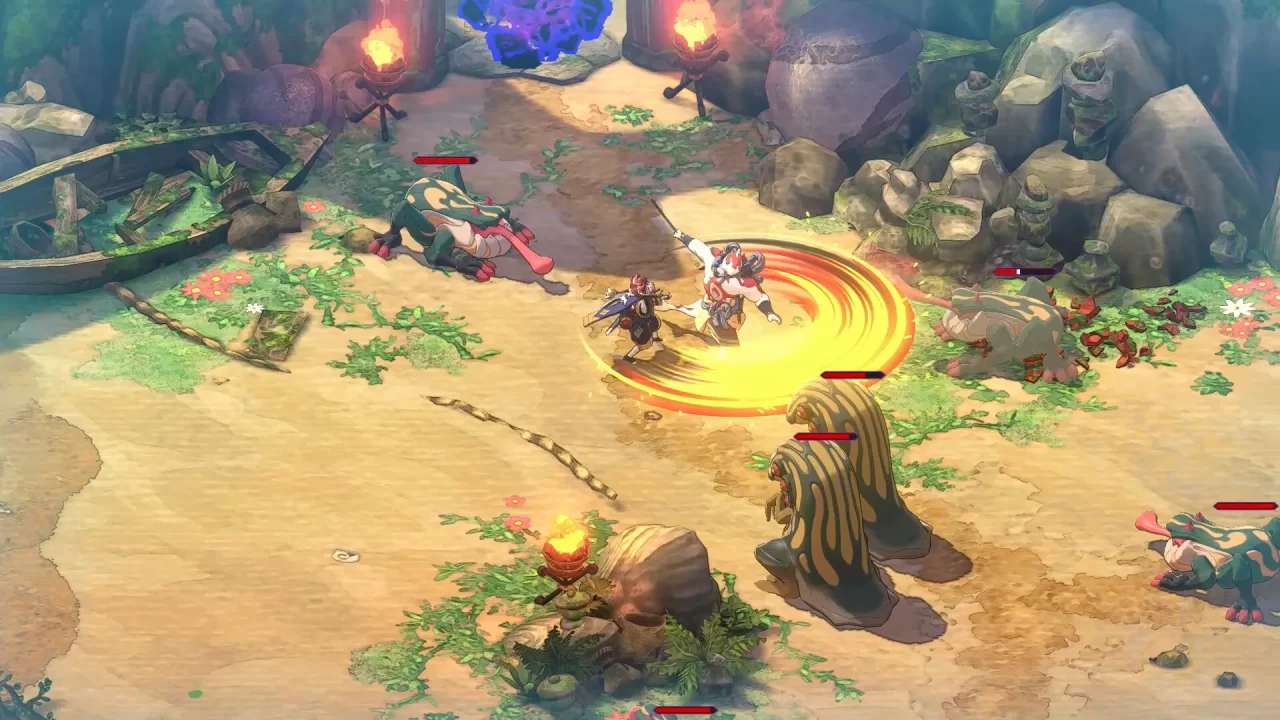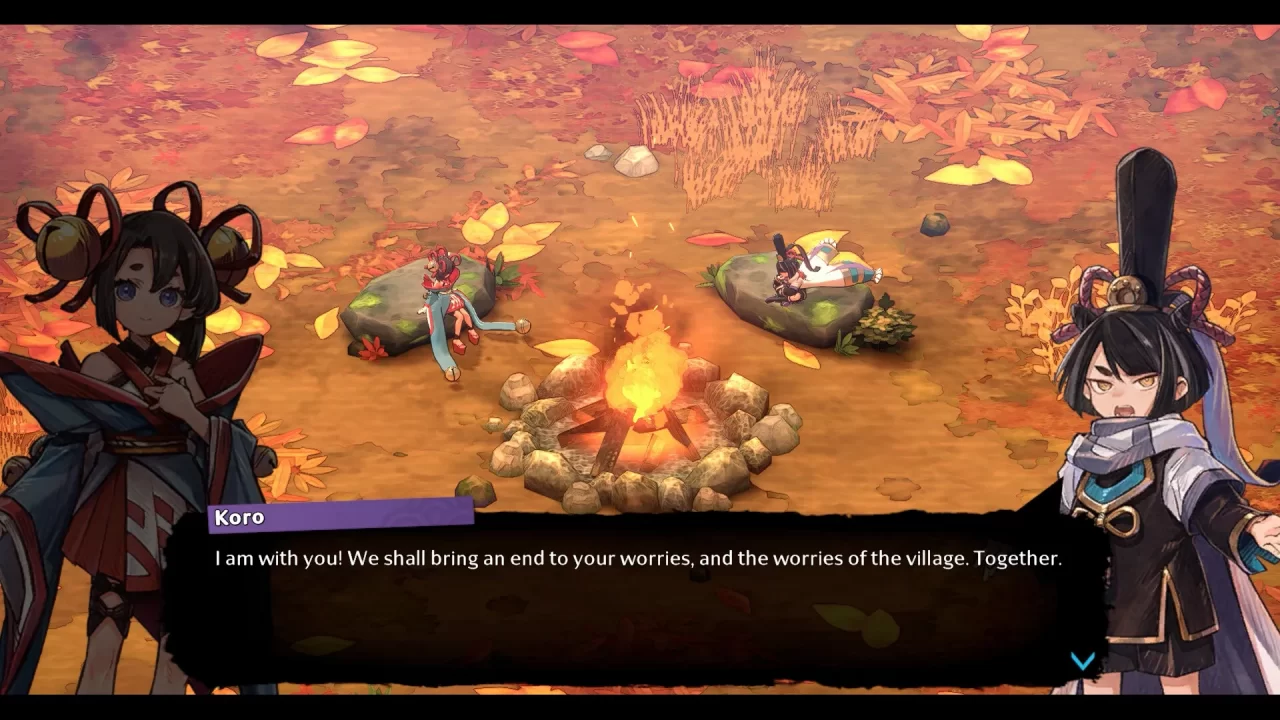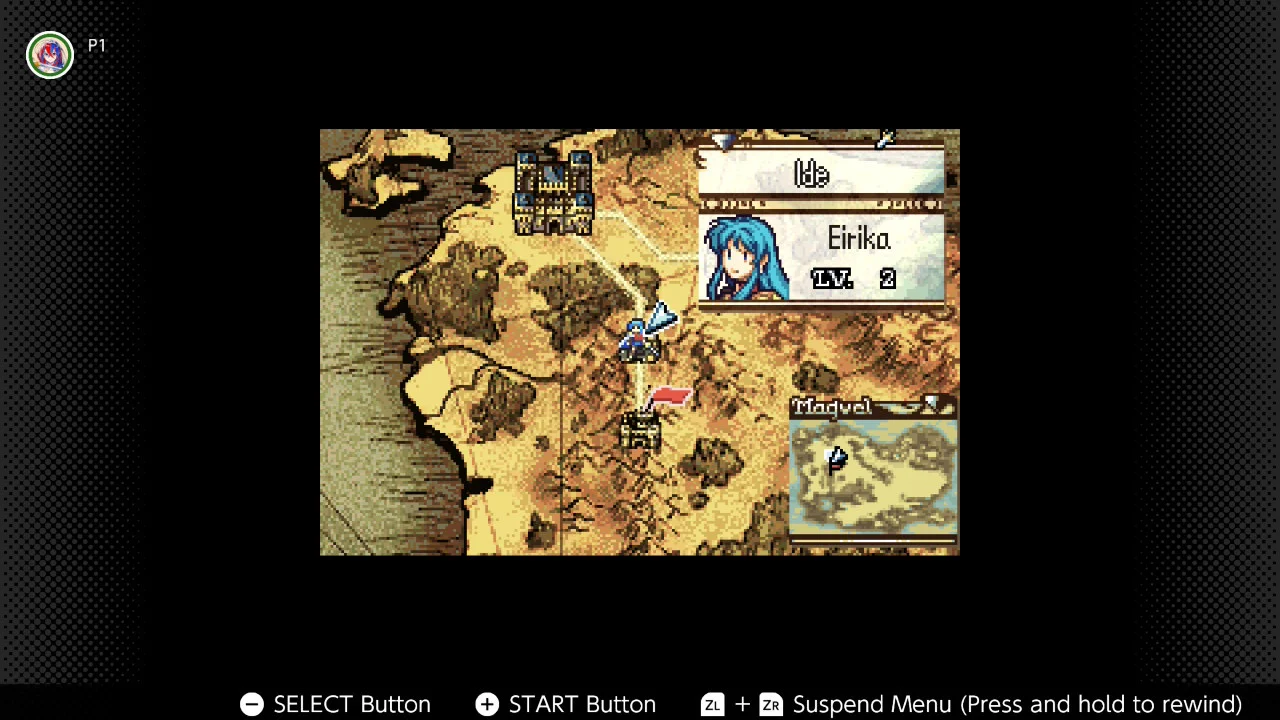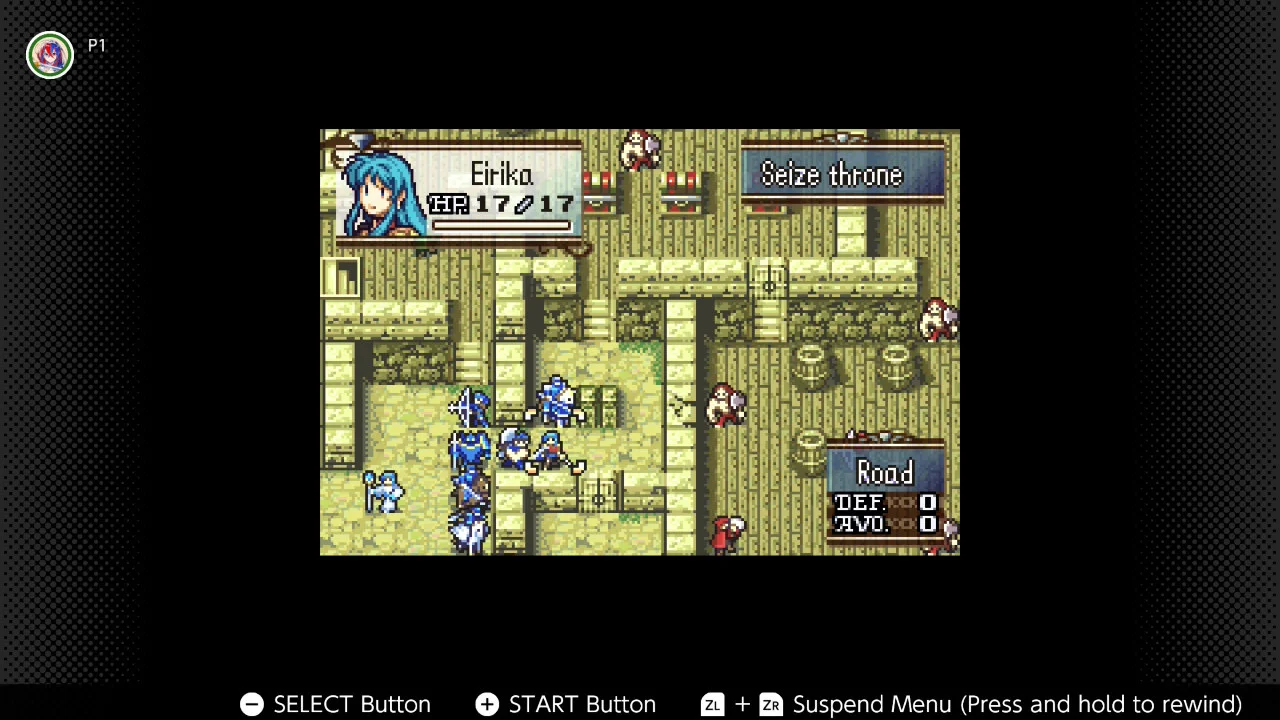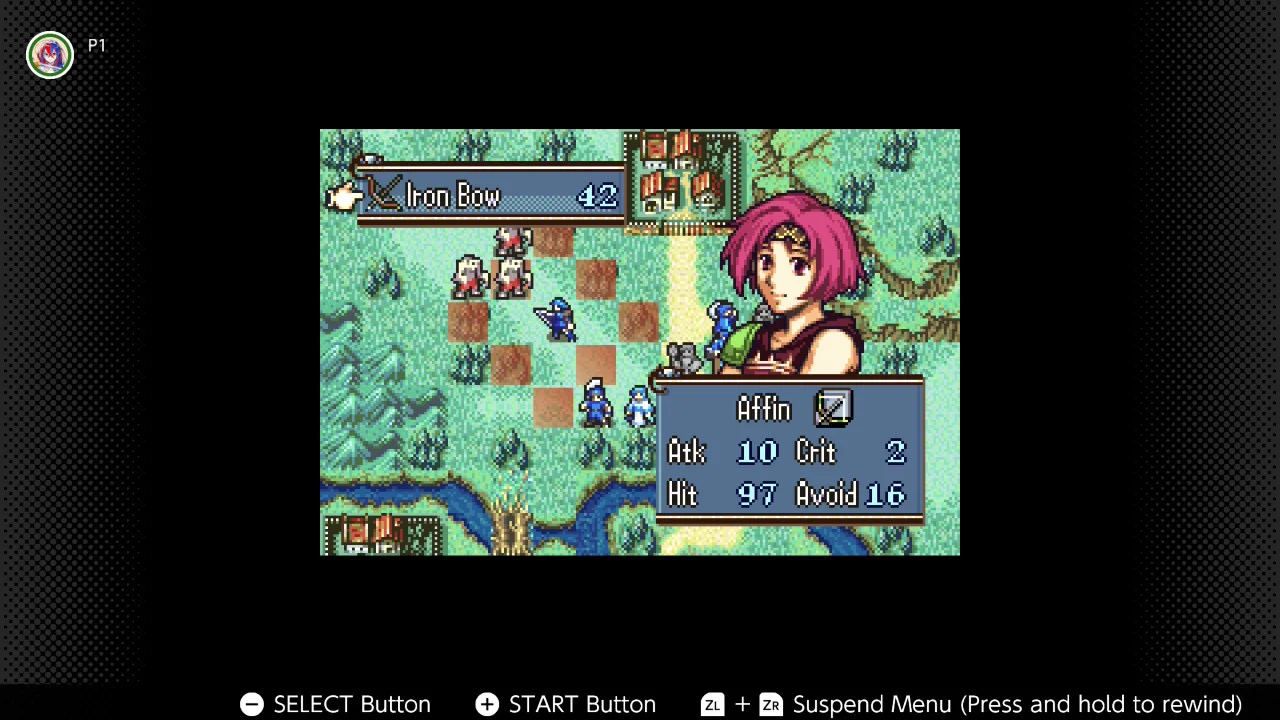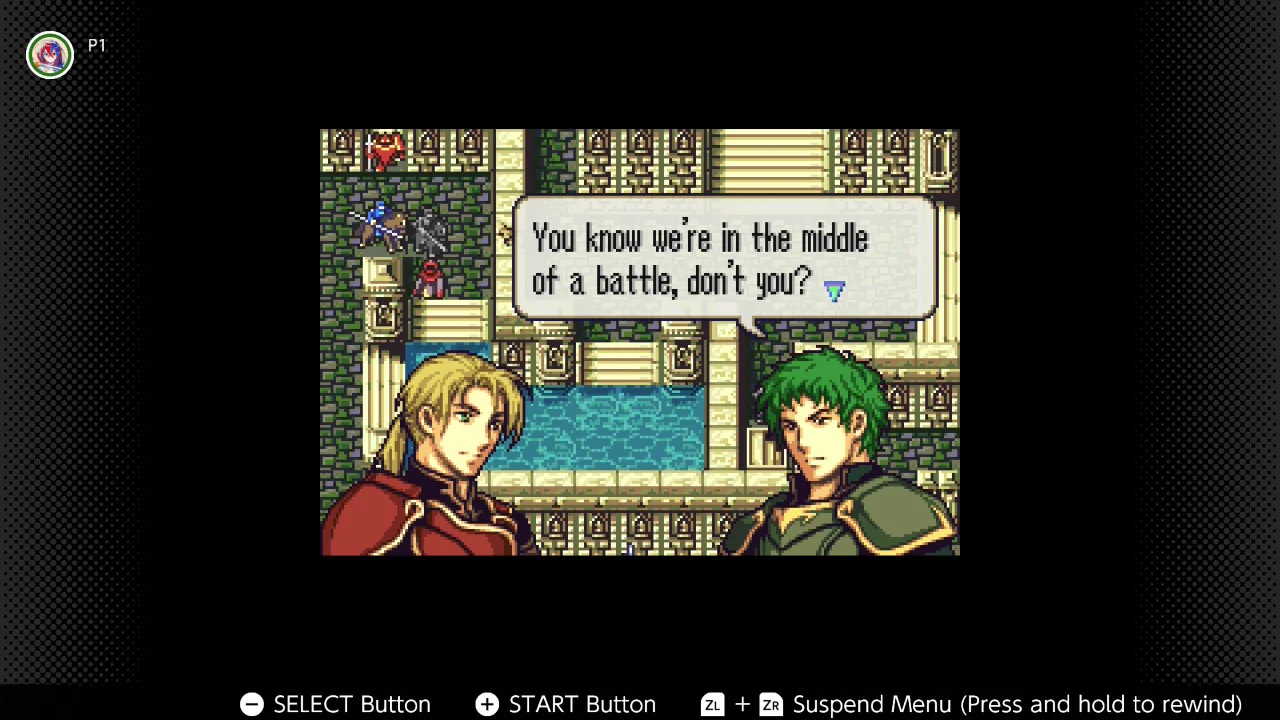Indie games can be difficult to review because they can ignite the imagination, get your head bobbin’, and make you fall in love with characters, but may also have a host of jarring problems. Do I love this game or do I hate it? Well, that depends on what part of the in-game week I’m in and how many bugs I run into. On its better days, Demonschool is easy to swoon over because of its sheer style and unique storytelling.
Faye is our bold, sincere, and intensely charming college student protagonist bound for Hemsk Island to study for the year. She meets a friend on the boat over, Namako, who is her foil, but also her platonic soulmate. The game pulls no punches as we almost immediately witness demons blowing students up into mists of blood. Gruesome though it may be, Demonschool celebrates the cheer of Italian gore horror, almost singularly accomplished through its artwork and music.
Studying isn’t in the syllabus as Faye realizes she and her growing group of friends were brought here to fend off a demon invasion. All is not so grim, though, because they still have a school, which means bonding over karaoke, cooking together, and going on dates. Classmates disintegrating before their very eyes will have to wait.
One might say, “Well, that’s macabre and inappropriate.” And that’s right! But Demonschool balances the urgency of the demon invasion with levity. Faye fascinates me because she is bizarrely and comically excited about murdering demons—and the artwork conveys this—yet cares deeply about innocent lives and standing up to authority. Flirty and occasionally unaware, Faye has so many layers that work phenomenally well together throughout the entire narrative, even as the tone gets a bit serious by the endgame.
Demonschool’s narrative flow begins on Mondays with three phases during each day: morning, evening, and night. Faye’s crew get an assignment or sniff out a mission early in the week, investigate it throughout the week, and have to nail the assignment or achieve the weekly MacGuffin by Friday. Then the weekend happens, and nothing bad ever happens on weekends. Rinse and repeat. Players explore various locations across Hemsk Island, typically clicking on people with white speech bubbles above their heads that turn grey after a brief exchange.
Eventually, the locations spider out into fifteen or so places, which can really slow down the experience, but I sorta didn’t mind because the NPCs almost always have something funny to say, especially in the first half of the game. The NPCs change up every week and sometimes have something new to say during the week, so if you’re like me and compulsively want to experience all of the content, be prepared to visit every location multiple times during the week to avoid missing this fantastic writing. Some quality-of-life features here would have been a real time save, but I’ll complain more substantively later.
Key mission targets and side quest opportunities are clearly indicated on the location menu, so if you don’t care about the NPC dialogue, you can breezily get to the meat. I couldn’t help myself, though, because Demonschool’s quippy conversations are core to enjoying the game’s tone. Almost every time, the NPC will have some silly name like “Heights Enjoyer” on the roof and will have something witty to say about heights—and enjoying them. The whole affair is addicting because it’s so on-the-nose, yet cleverly written. I chuckled throughout.
In terms of the flow and pacing, Demonschool can be a bit of a slog as the mid-week can feel like filler; it’s as if the developers rigidly decided that all segments of the core storyline need to fit into this Monday-to-Friday mold, and had to find ways to fill in each of the three phases of the five weekdays. The result can feel sluggish and irrelevant at times, though the writing commendably obscures the wild goose chase. To make matters worse, the number of battles can feel just as much like filler.
Demonschool’s battles are simple yet excellent. When Faye and friends run into a demon, the screen will shake a little as Faye ravenously charges the team into battle, as if fighting demons is the most exciting act imaginable (I love her enthusiasm every time). Faye’s team is launched into a nether realm, somewhere between the human and demon world, and fights on a square-based grid. Players decide which allies will join the team, usually four out of several choices. Enemy positioning varies, which can feel gimmicky at times (e.g., all enemies lined up neatly in three columns).
This is where I interpret Demonschool more as a puzzle game than a strategy RPG. Players have finite action points with which to move the heroes, typically three spaces orthogonally or diagonally. If an enemy lies in wait, most characters will stop movement and hit the enemy, occasionally pushing demons into other demons for added damage. At other times, characters will have some other added effect, or even zip through the entire line of enemies. In this way, battles are almost singularly about positioning.
Expect damage numbers to range from 1 to 2, with special abilities potentially rising to an excessive 8, as almost all demons have four or less health. The mechanics of Demonschool are rich: some support characters can buff or heal allies, debuff enemies, move enemies around, place obstacles on the field, and so on. When characters earn enough mana points by acting on enemies or allies, they can activate a special ability, which is unique to each character. Fundamentally, these often involve elemental effects and unique attack formations, and can substantially change the course of battle.
Every battle has an expected turn limit—think of it like par in golf. If you meet this goal and no ally dies, you get bonus currency. The reason Demonschool can feel like a puzzle is that every battle can easily meet these conditions supposing you outfit your characters with the right abilities and choose a good composition for that battle. I was able to meet these conditions for nearly every battle, though I sometimes chose the “restart battle” option.
What’s more, every time players plan their turn, they can undo movement swiftly and choose a different option. This is especially helpful when learning how the mechanics work together in the beginning, and also towards the end of the game when battles and abilities can become complicated and multi-step. Pressing the confirm button triggers an extraordinarily satisfying visual as characters act out the planning phase in smooth, stylistic fashion. Enemies then take their turn and pounce on the good’uns.
Demonschool bleeds style. In this day and age, we expect bold animations when characters speak, not still images. Still, Demonschool absolutely excels in its character artwork. Almost every emotion matches the script well, and characters frequently change poses—coupled with a tasteful shake of the image. In fact, one of Demonschool’s many minigames to build relationship status with an ally involves guessing what emotion their silhouetted pose is. The artwork unquestionably breathes life and style into the large cast’s personalities and accentuates the dramatic story woven between them.
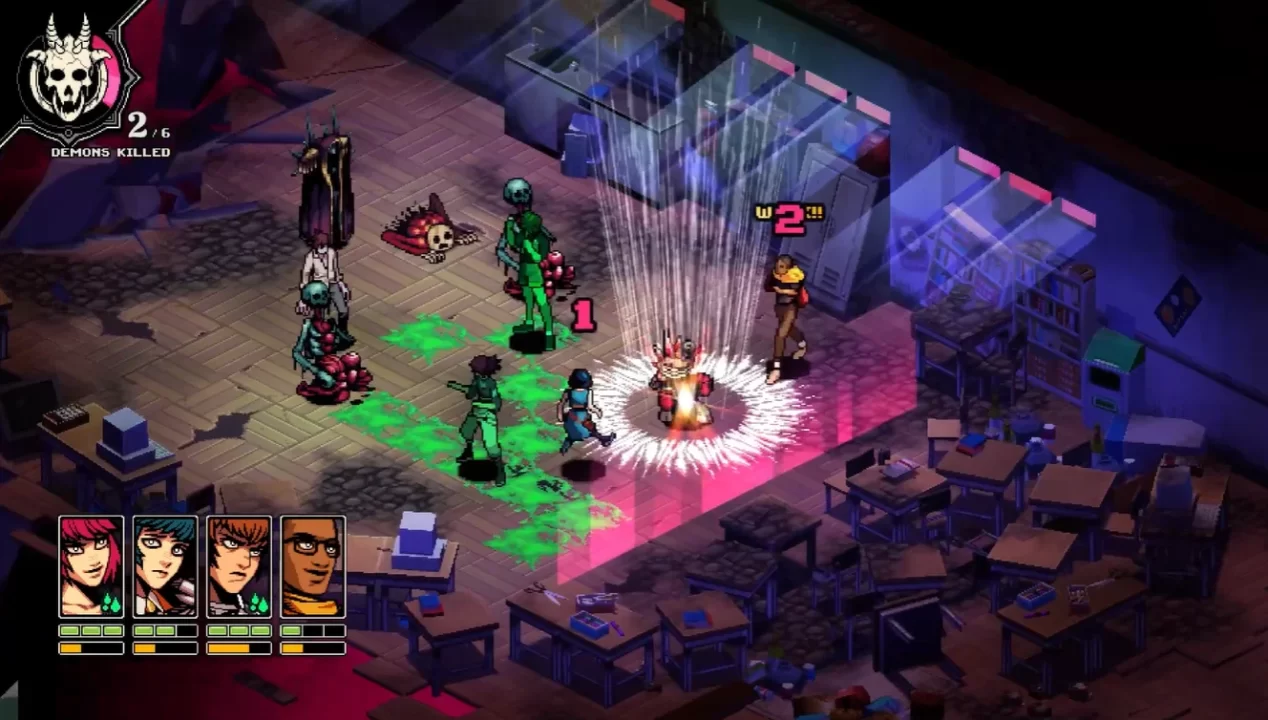
The landscapes are no slouch, either, as most locations boast incredible detail, yet have a blocky, polygonal simplicity to them. Demonschool’s rich style is so hard to describe because on its surface it appears basic and elementary by today’s standards, but the whole composition comes together with such vibrancy that I absolutely fell in love with it instantly and throughout the 45-hour trek. With a game like Demonschool that seems almost entirely about the vibes, a good soundtrack is a necessity.
Lucky for us, Kurt Feldman composed an outstanding soundtrack. Expect heavy reliance on synthy, bassy keyboard with frenetic percussion. Harmonicas, too! As is essential, the themes match every instance in the game, making no track feels jammed in inappropriately. Given Demonschool’s many hours of gameplay, some recurrence is noticeable, but it never feels repetitive, likely because of the sheer quality of almost every single work. “Weekend” is my personal favorite.
With so much to love about Demonschool, all is not immaculate. As referenced earlier, Demonschool has a significant pacing problem and can feel longer than it needs to be. Although I enjoy the battle system, the simplistic nature of combat—despite its various mechanics—doesn’t warrant as many needless battles as the developers throw at us. Since victory and failure can sometimes feel like they’re on a knife’s edge, precision reigns supreme, which can make each affair feel a bit daunting, especially when there’s little story relevance to several encounters.
Expect to do some mundane exploration on Tuesday to Thursday throughout each of the three phases, and expect the team to run into some demons in a bathroom, at the harbor, in the alley, and so on. Though Faye dramatically thrusts the team into combat, the demons appear randomly and without cause. While, yes, the demons are invading and the chance encounter makes sense conceptually, from a narrative perspective it all feels like filler. I want the good stuff, and the good stuff isn’t a random battle after the team encounters a dead end on a poor lead.
I started reviewing this game back in August, and it has met several delays since the start of its development. At the time in August, it was rough around the edges—crashes, quest markers never disappearing, visual issues, etc. The team delayed the game again, and I hopped back in a couple months later after several patches. While most of the pre-release issues have been hammered out, I continue to run into crashes and visual anomalies in the post-release, though far less frequently. Although Demonschool continues to receive patches, the technical issues are an unfortunate blemish on an otherwise stellar experience.
Demonschool’s hard to score, because most titles—including the AAA variety—don’t have the bold vision and intense style of Demonschool. We play indies to witness new ideas with a healthy degree of polish, though they also come with their issues. All in all a memorable and pleasurable experience, Demonschool is at times a slog, at others food for the soul. If you have the time to enjoy a novel jaunt through early adulthood, settle in for an otherworldly experience.


